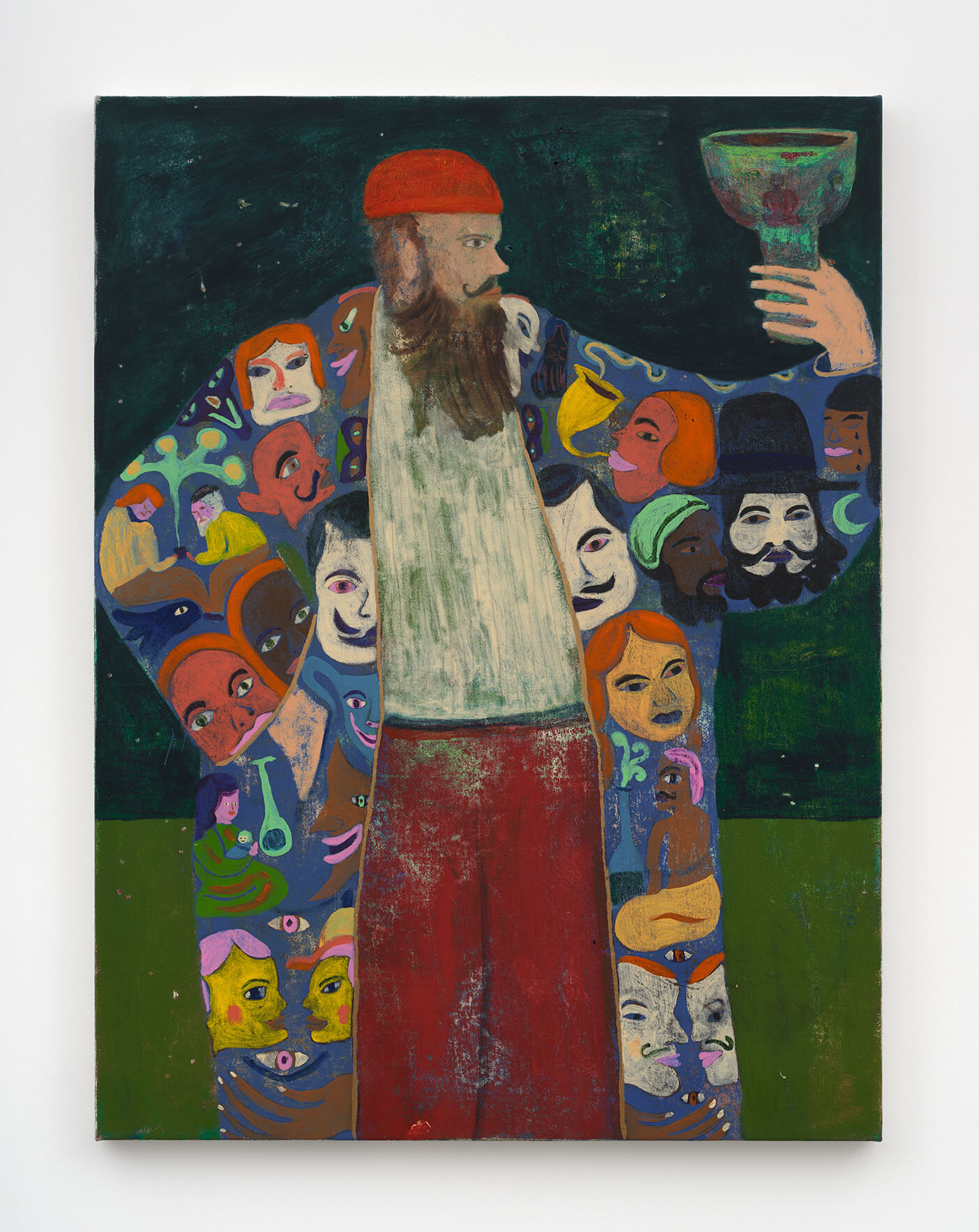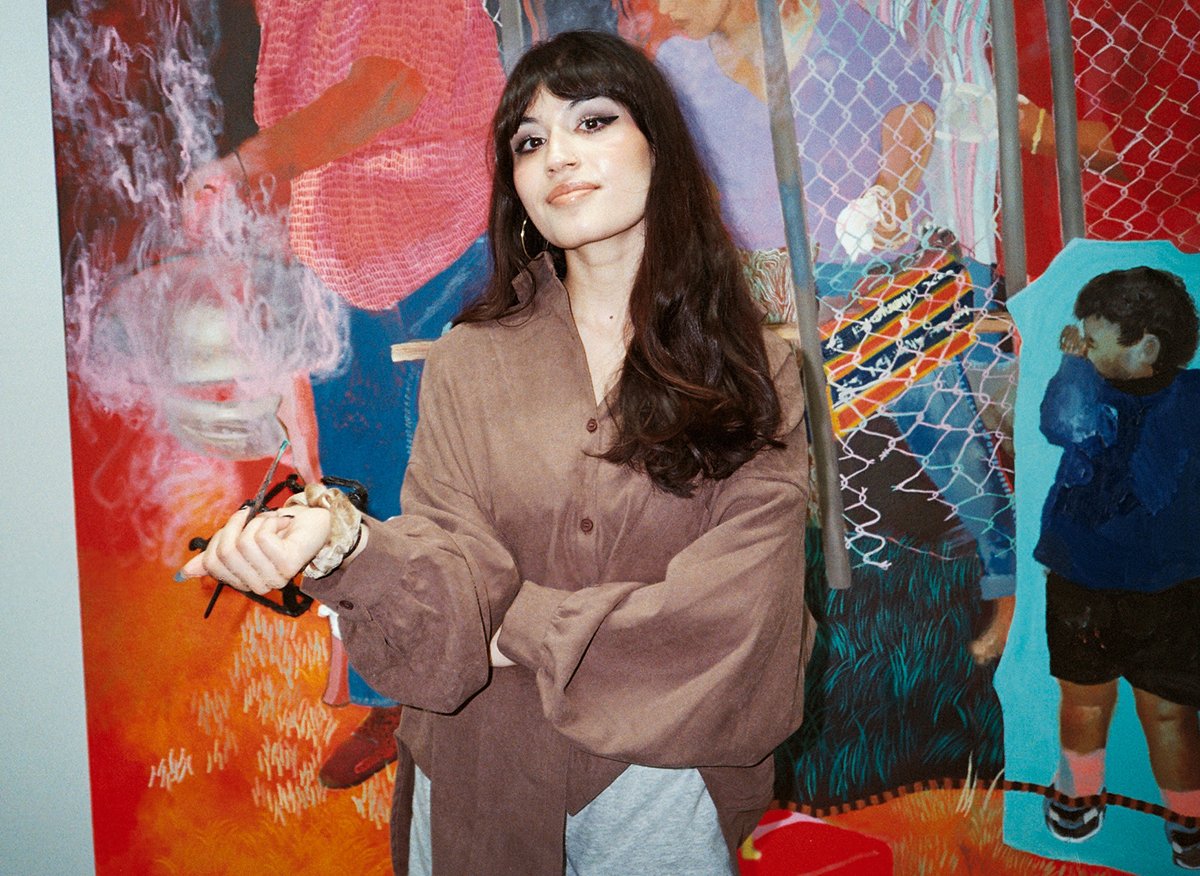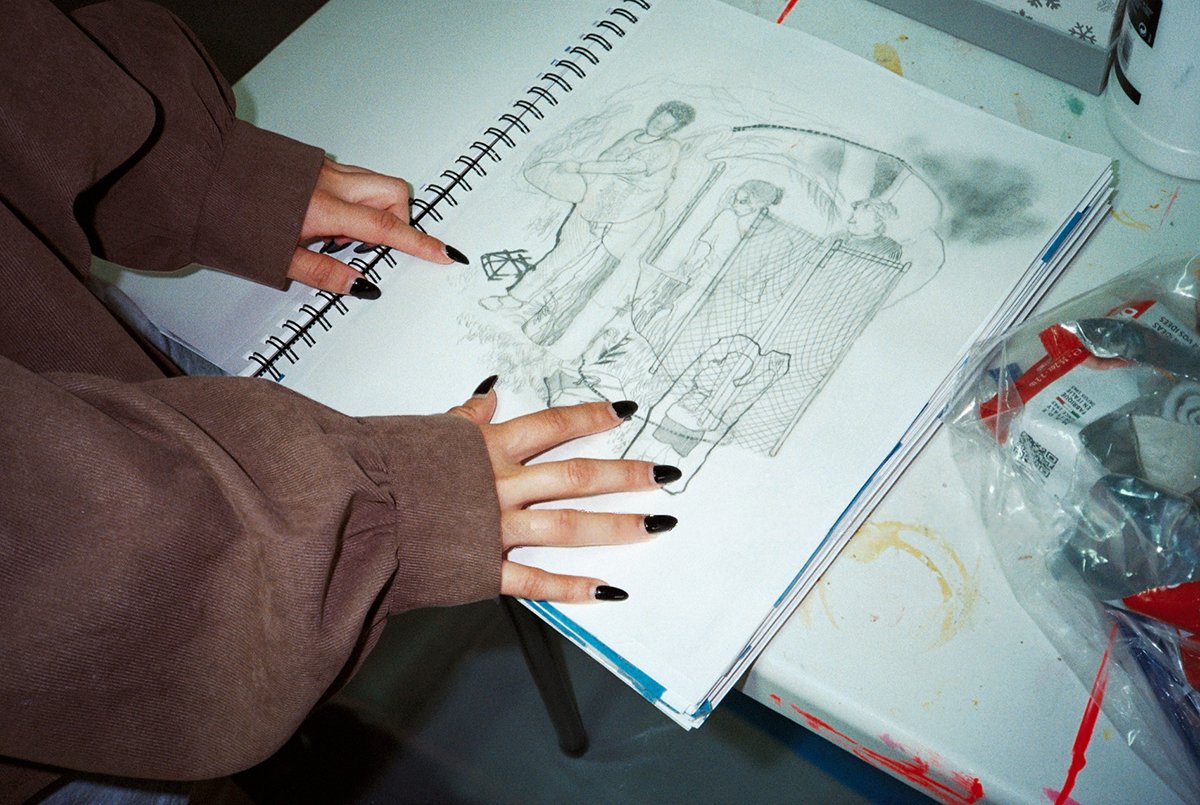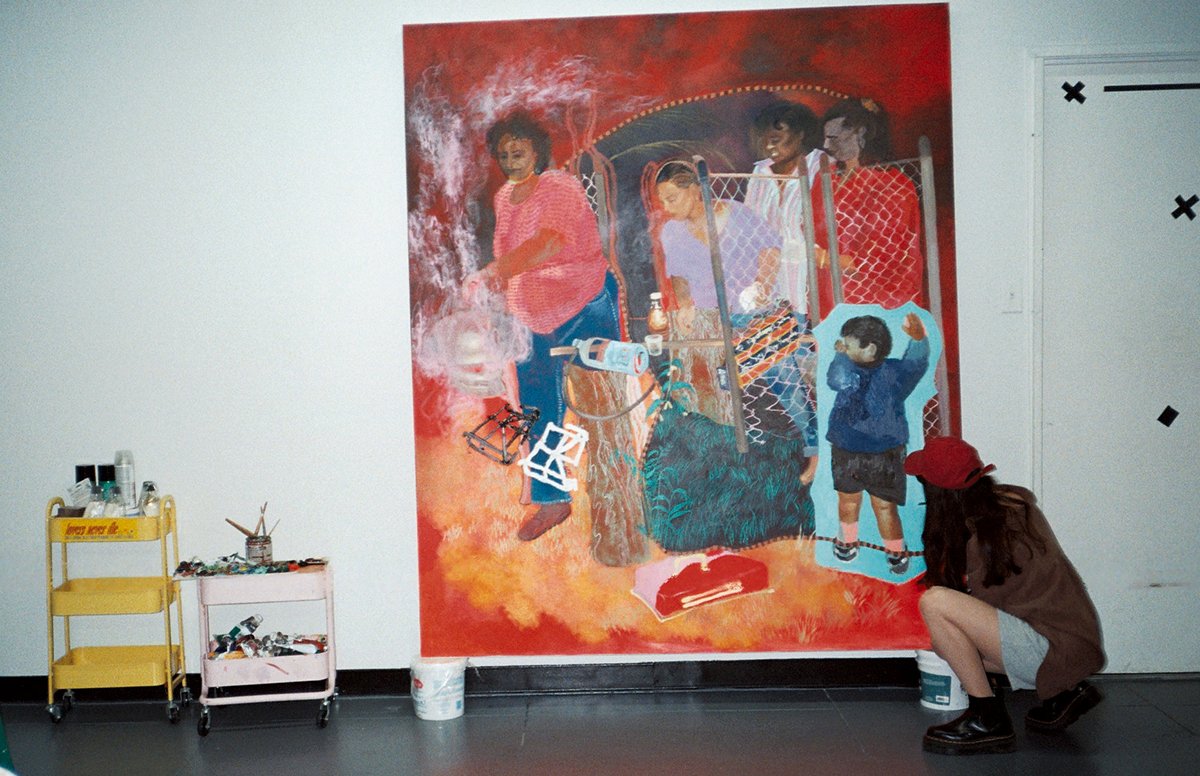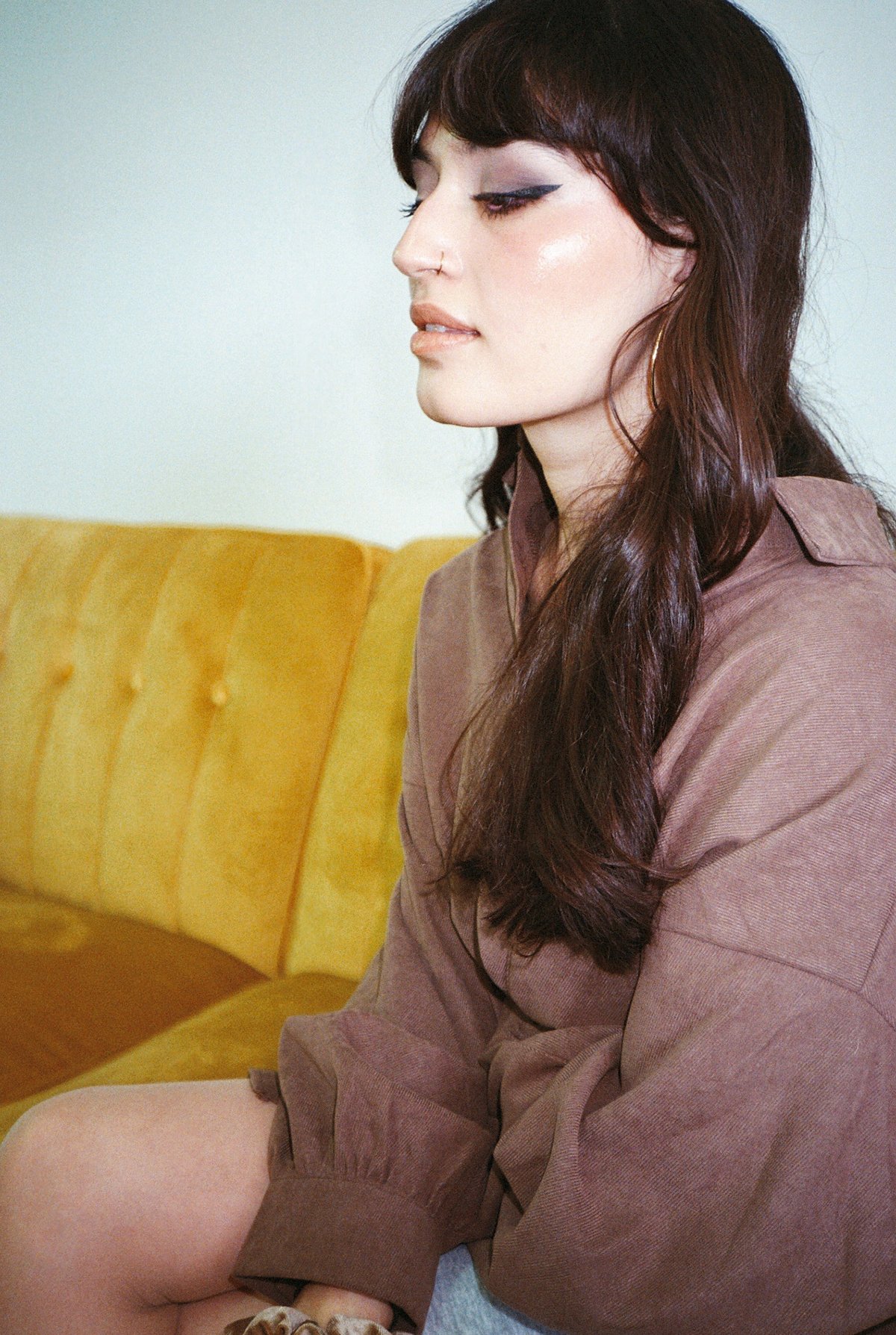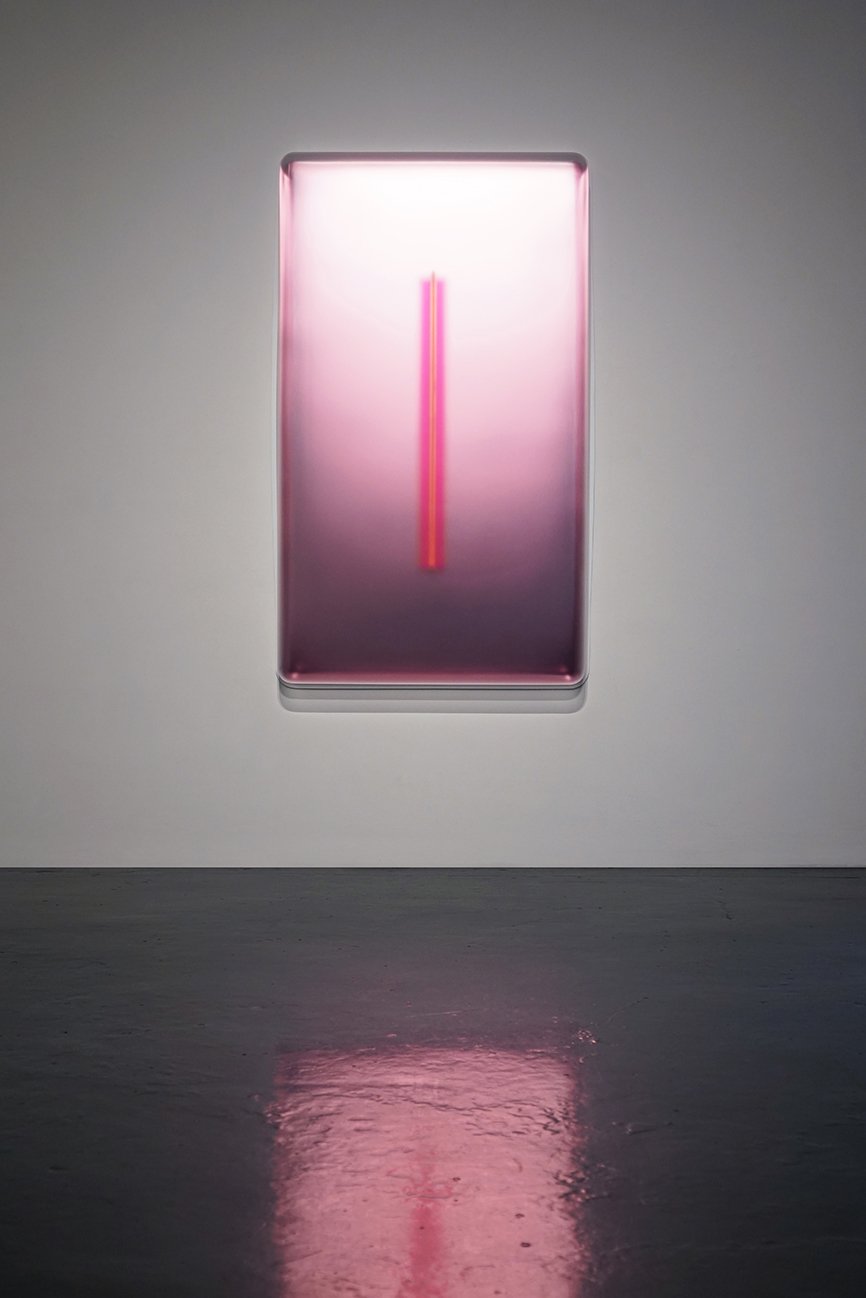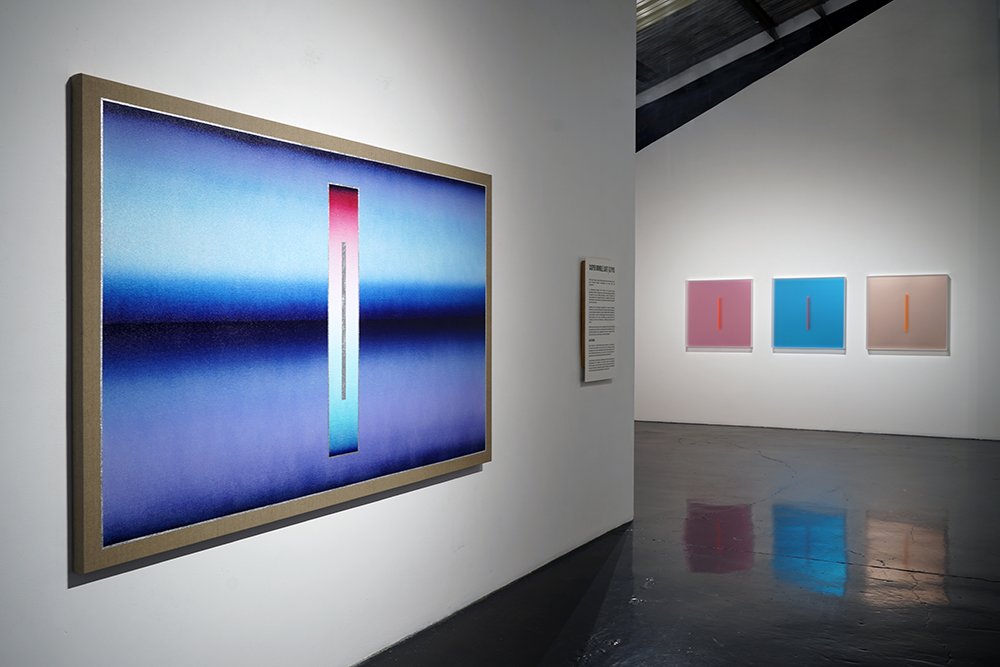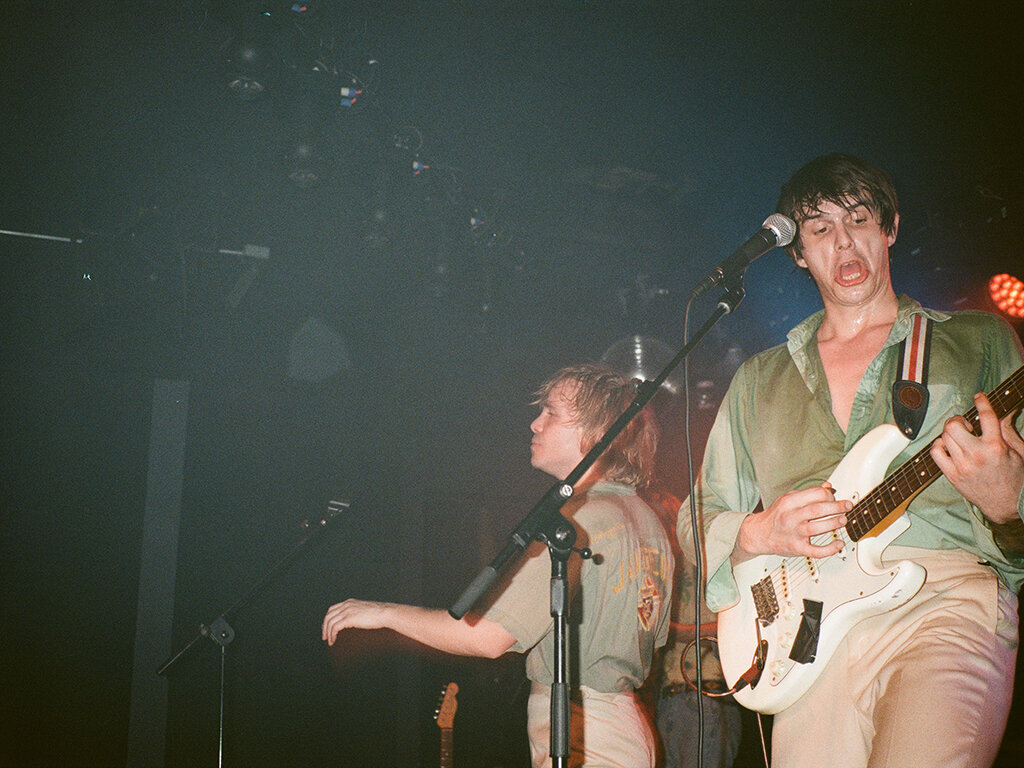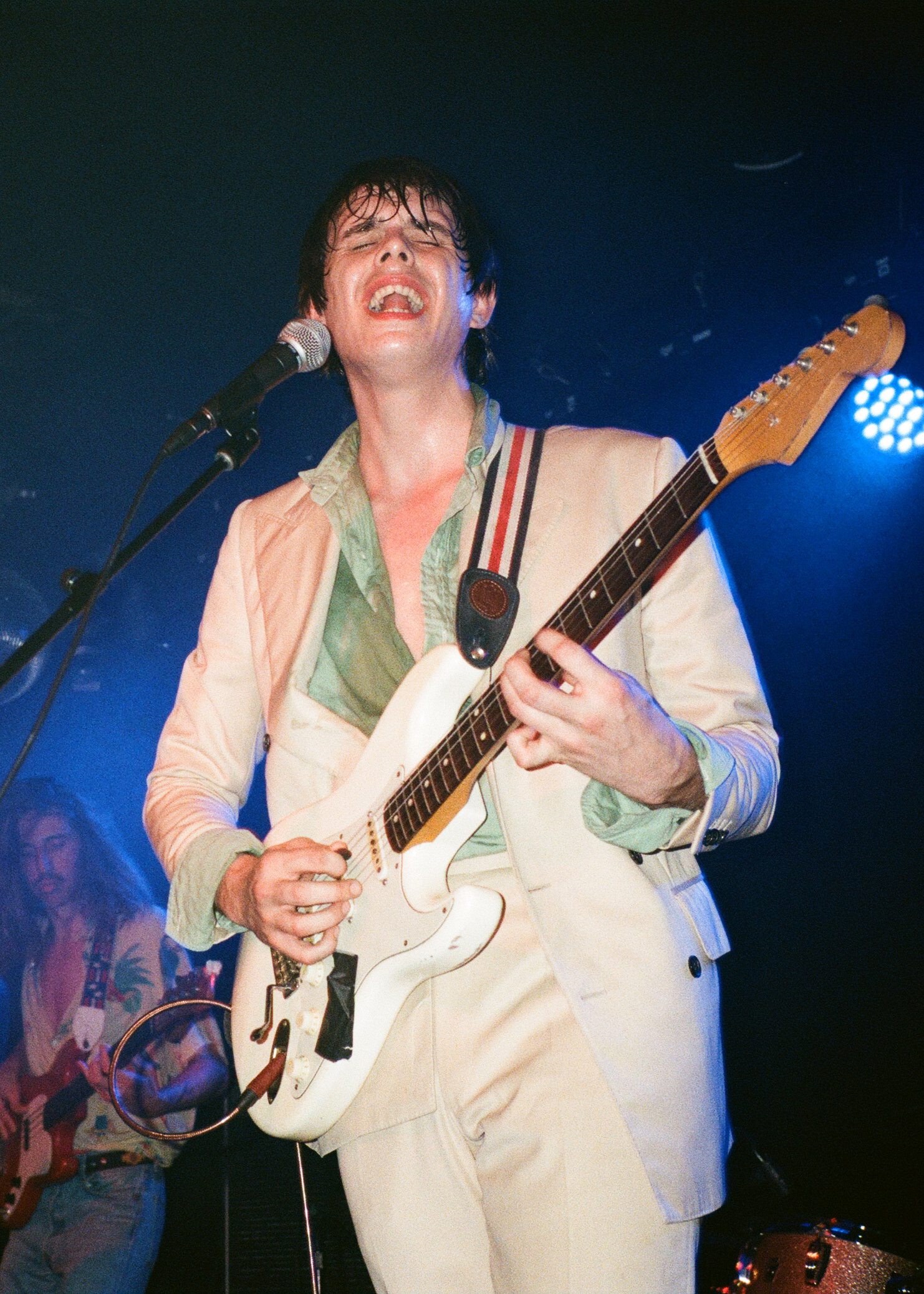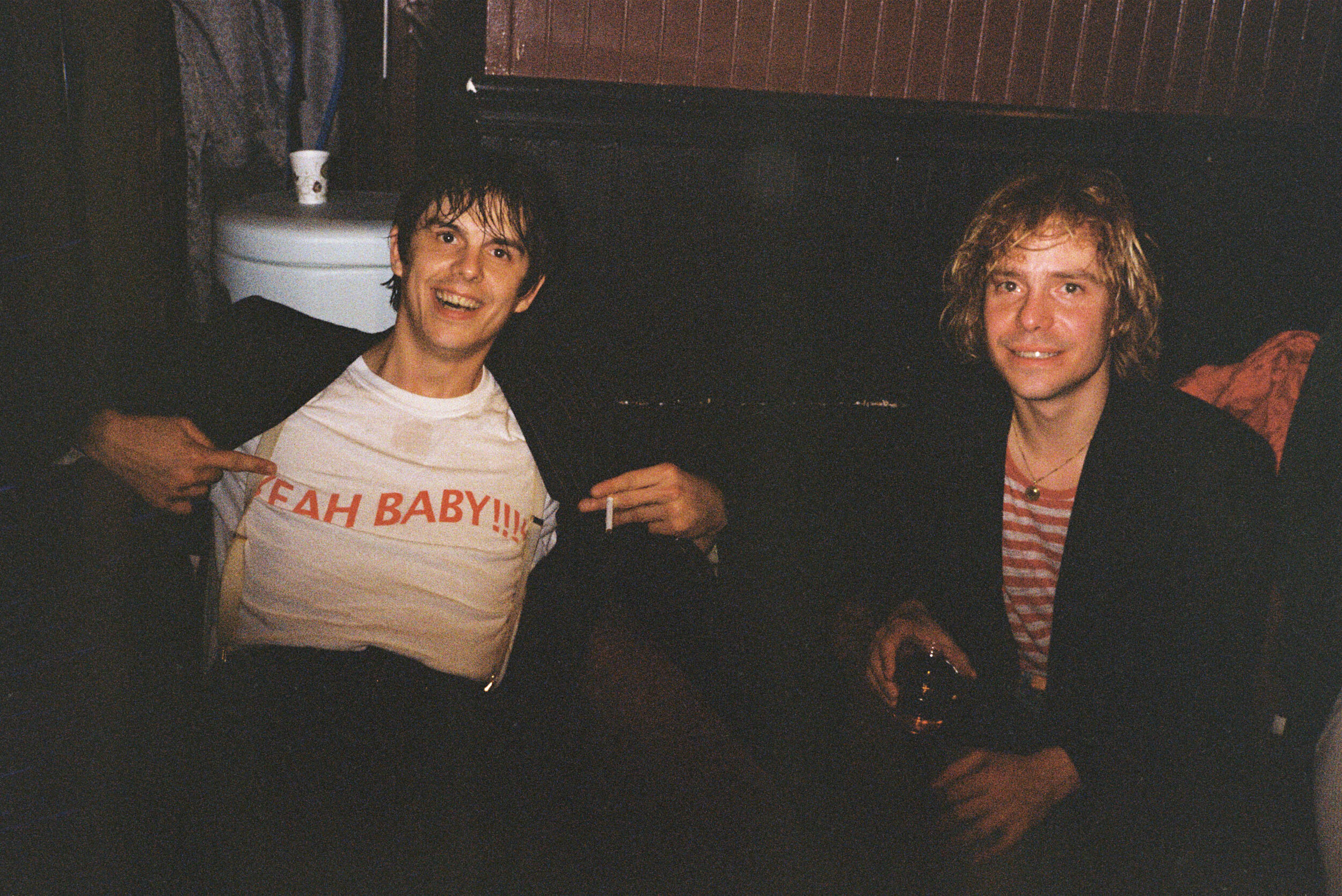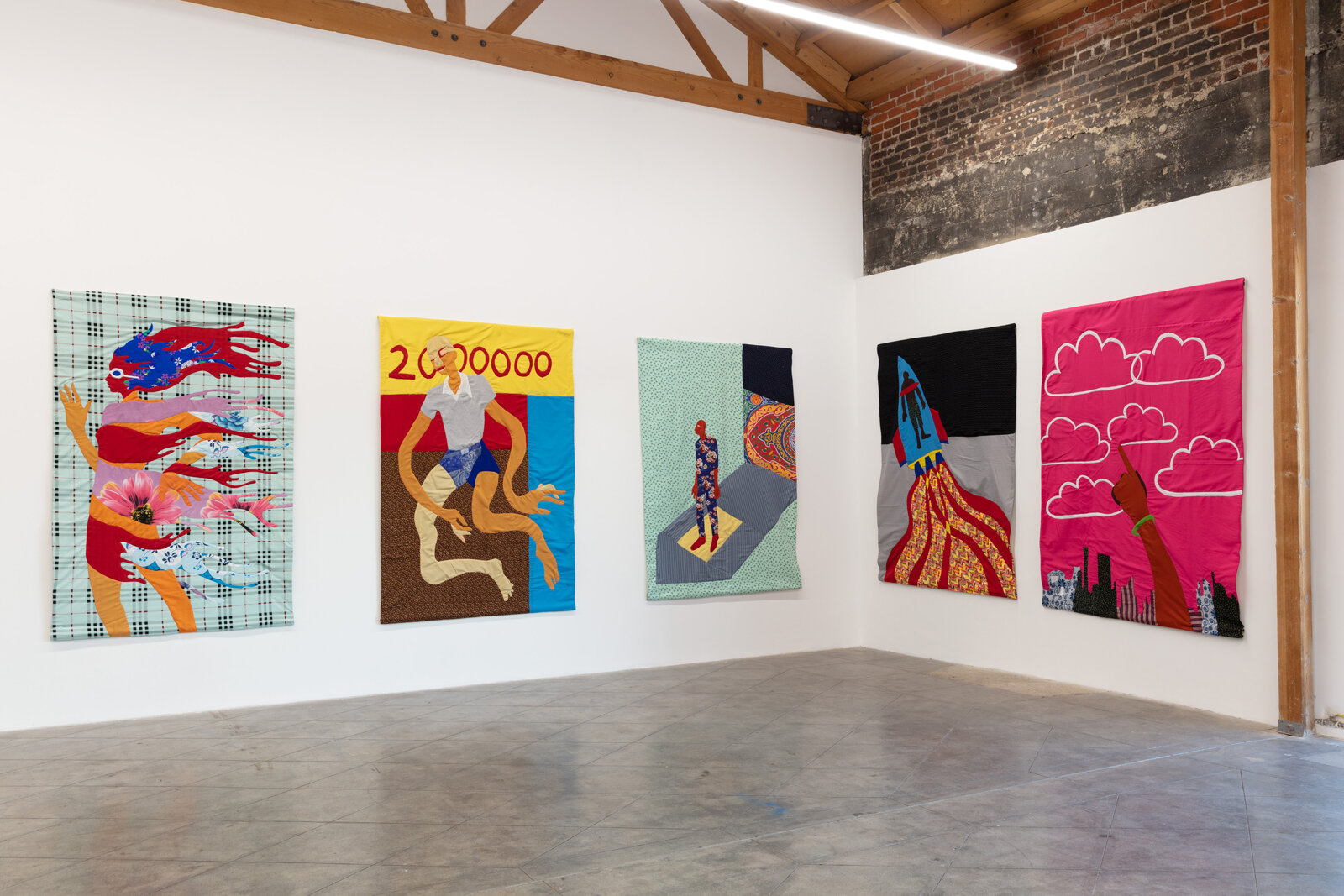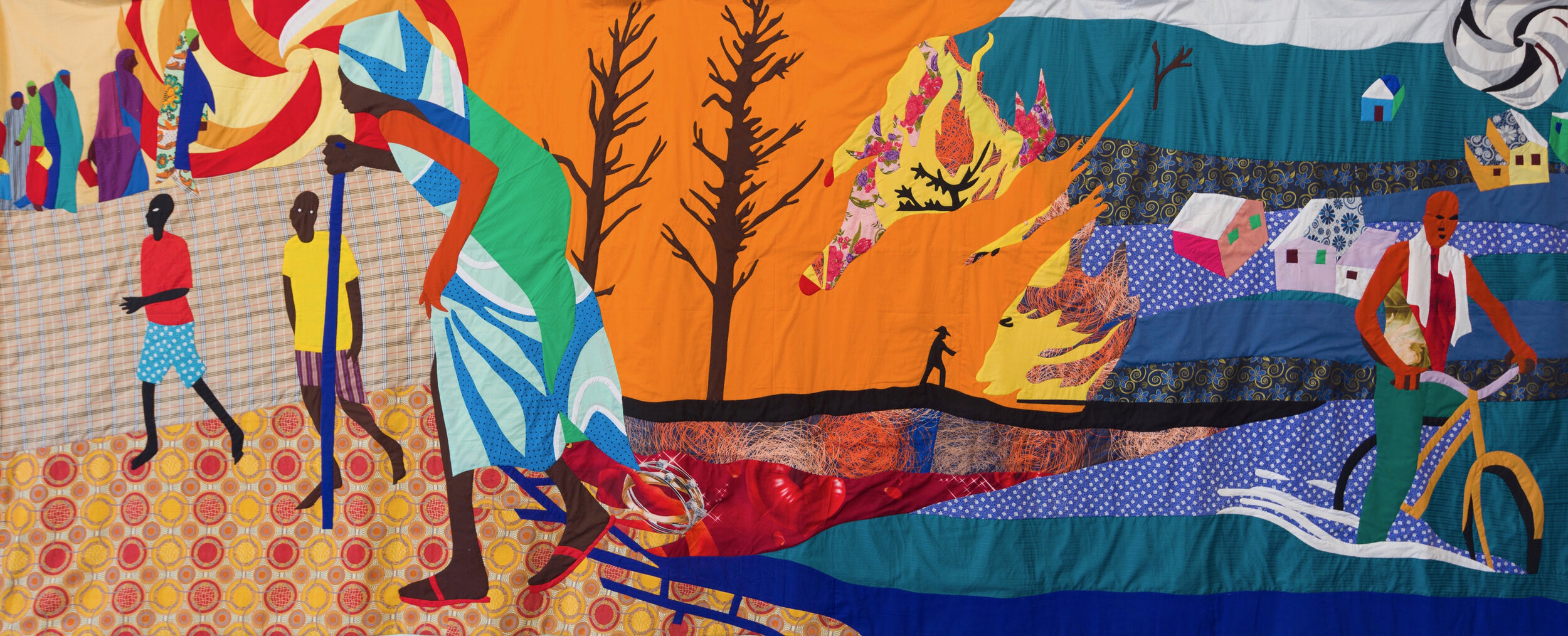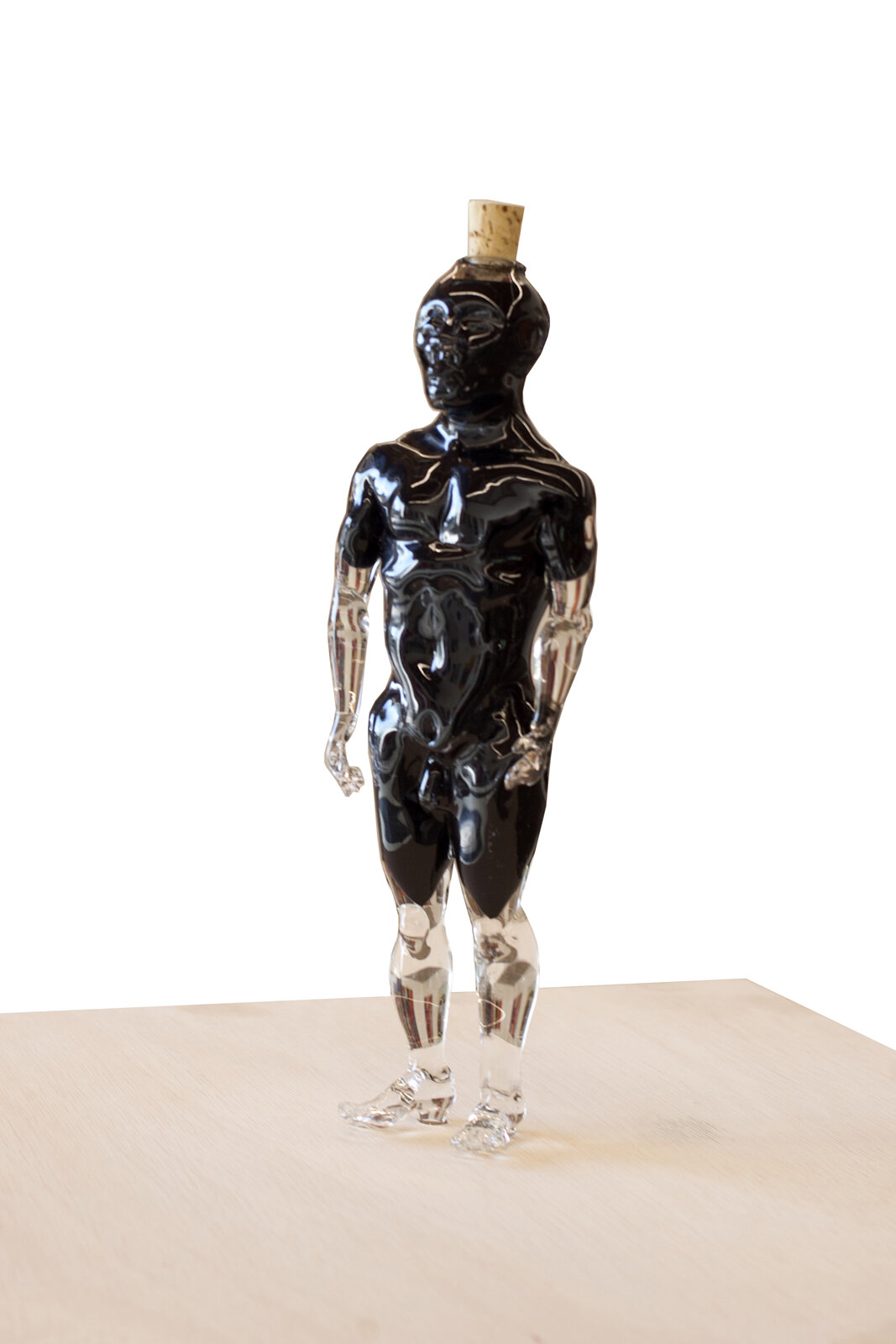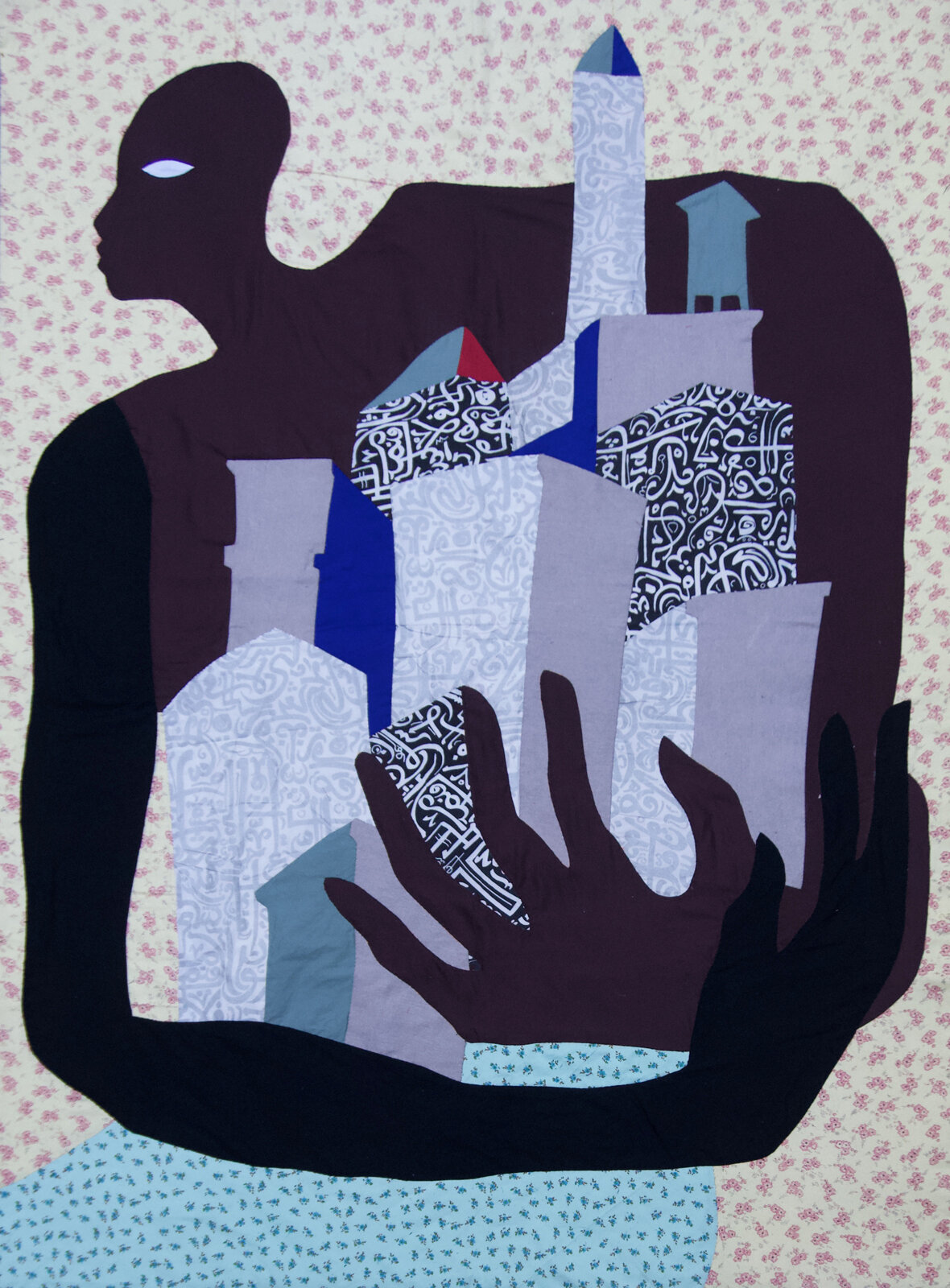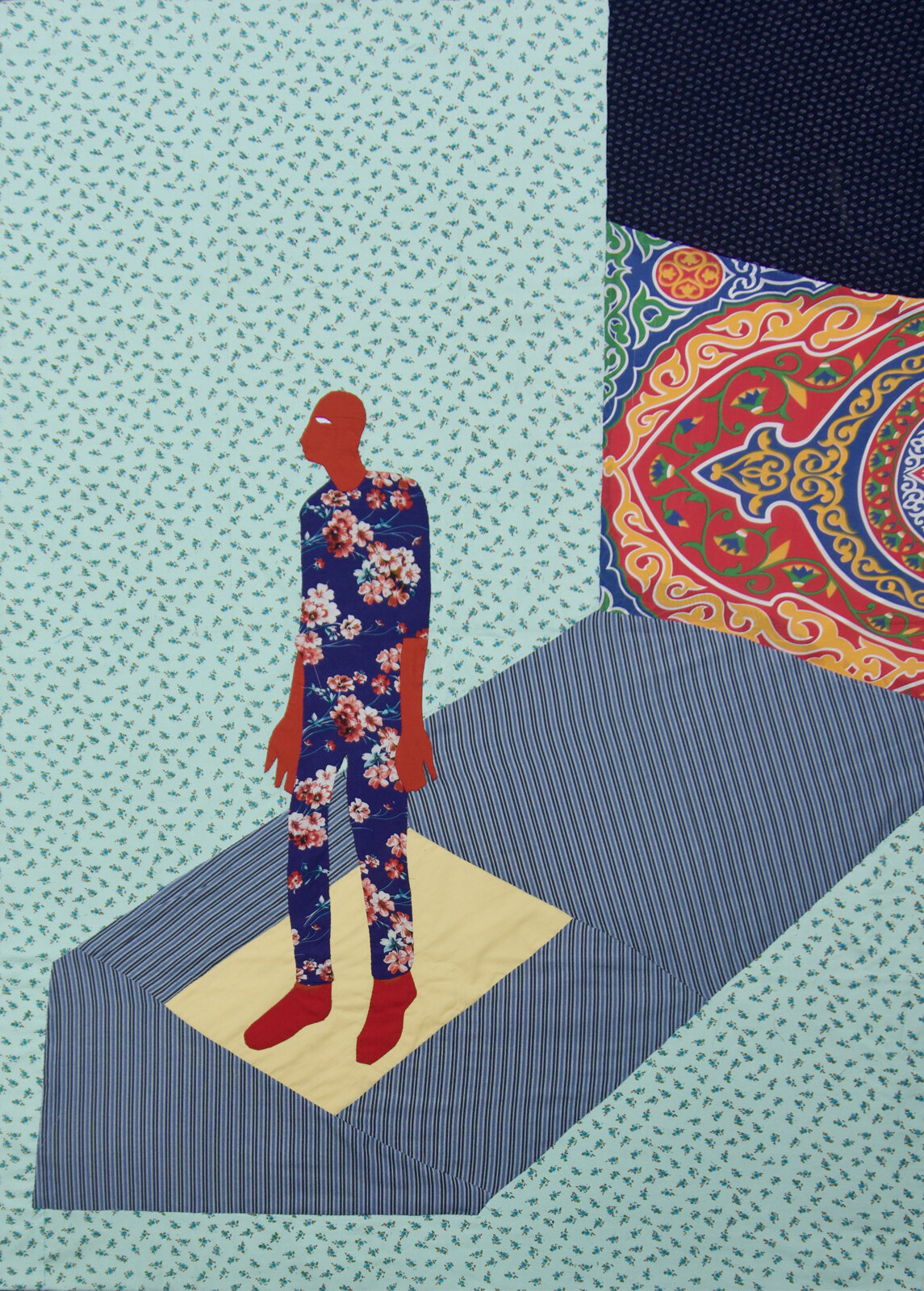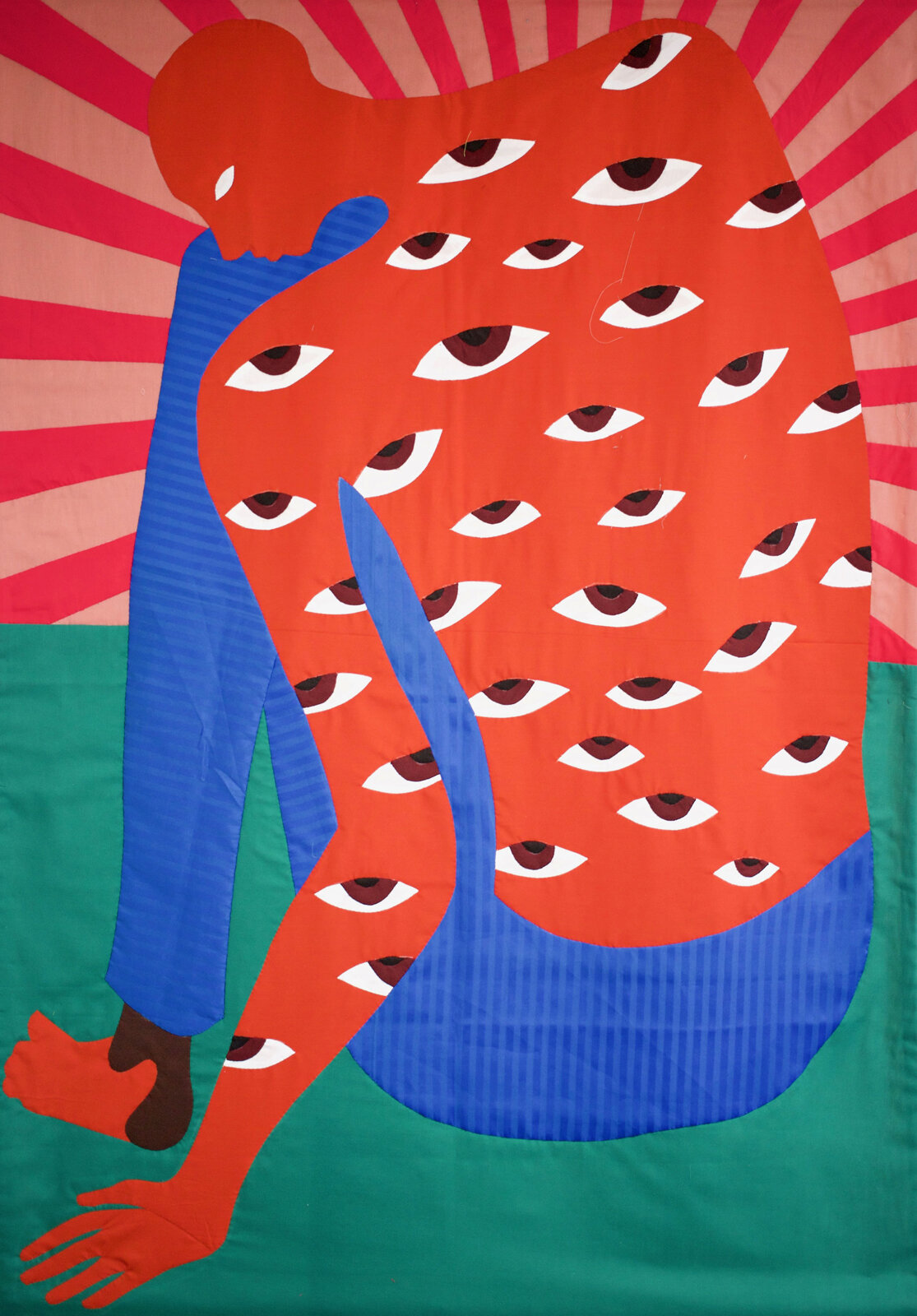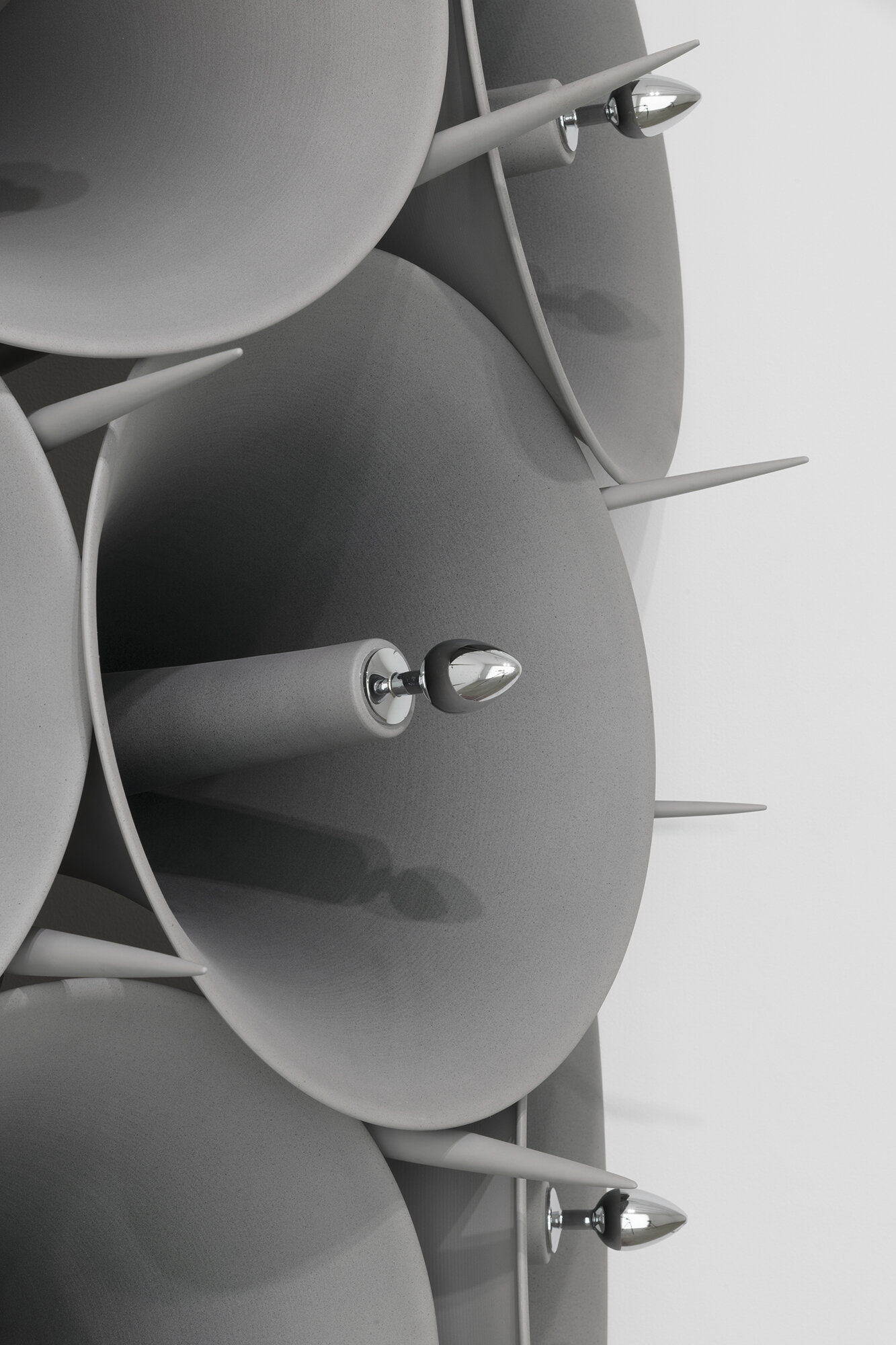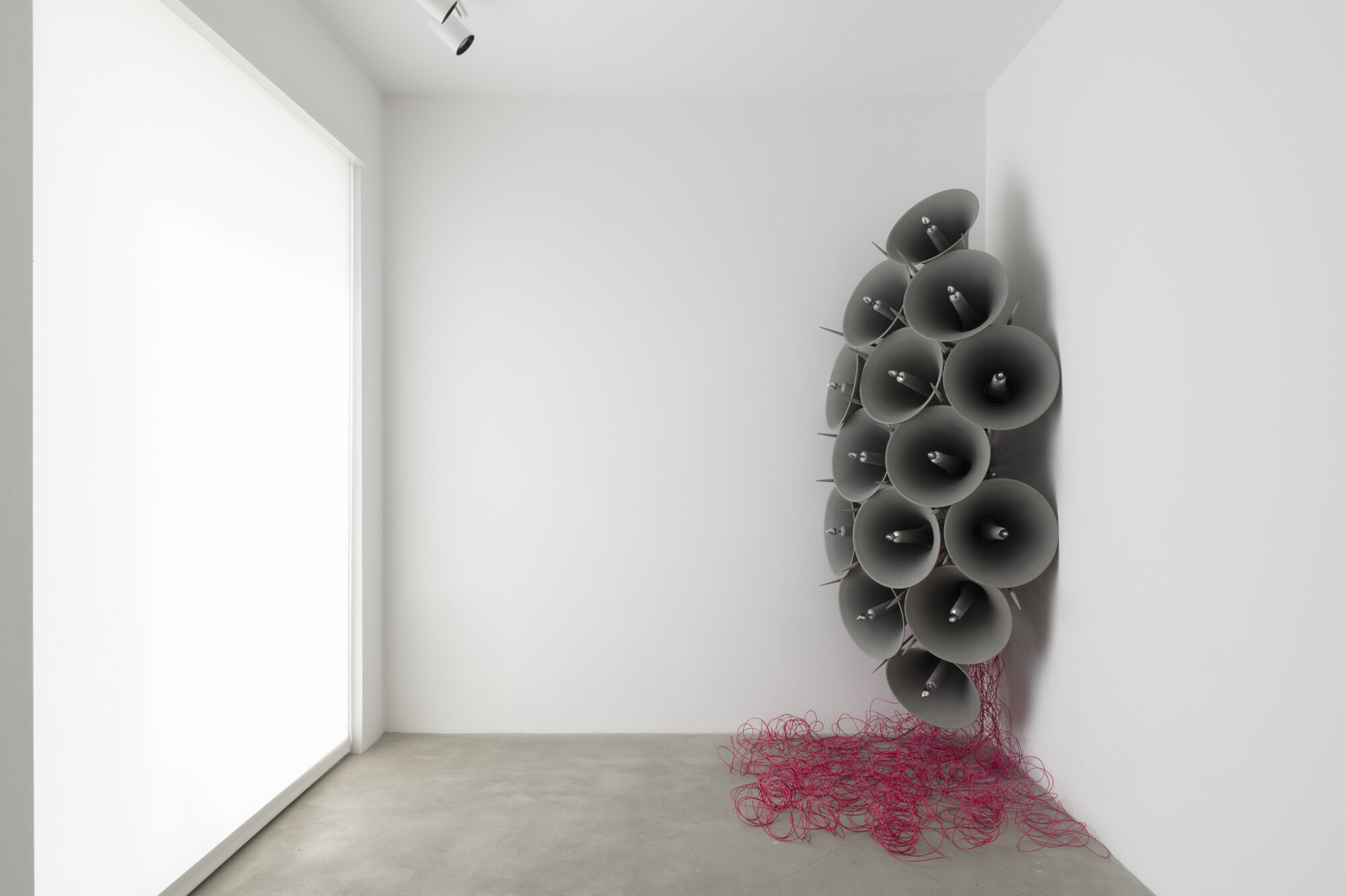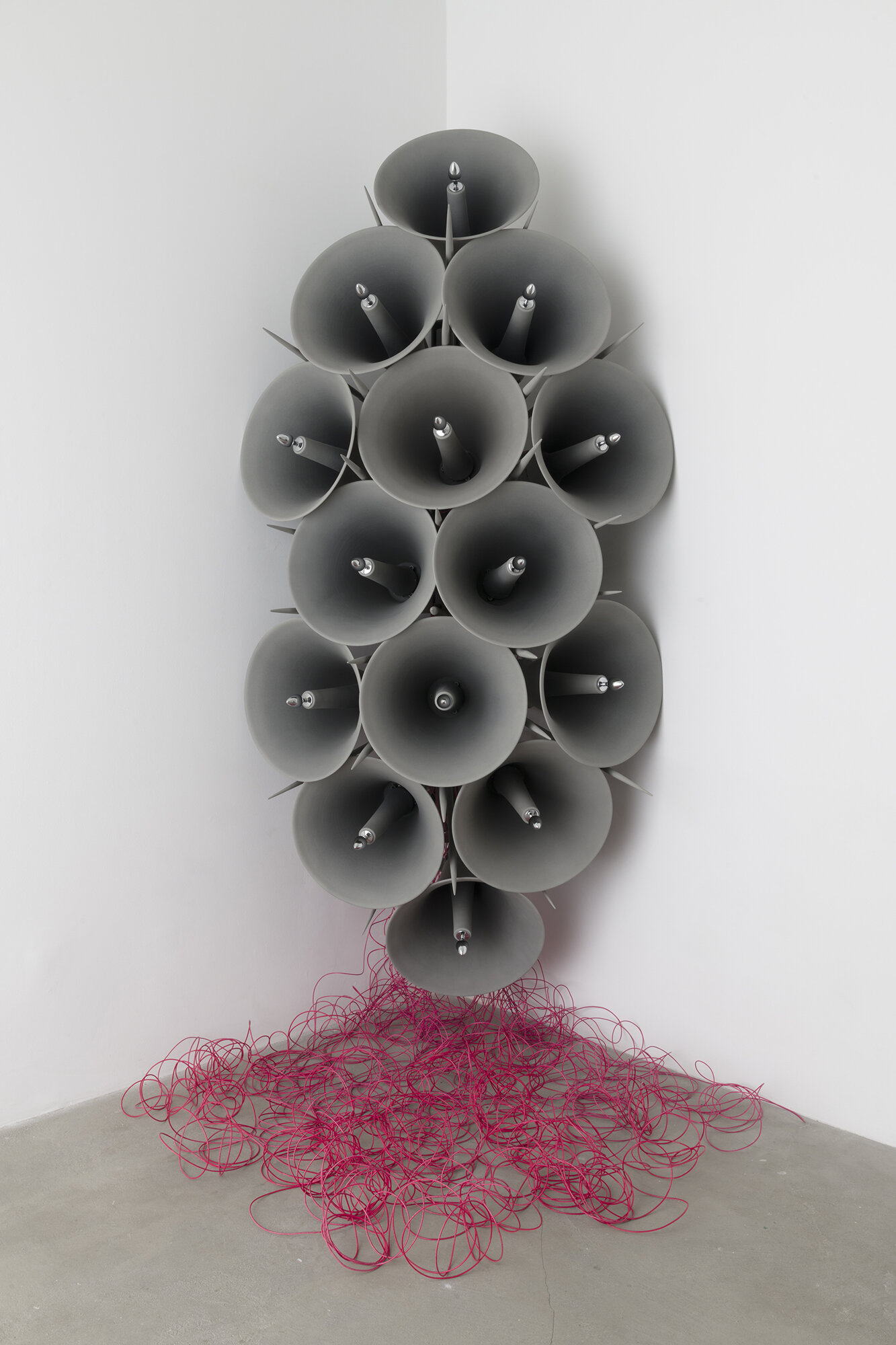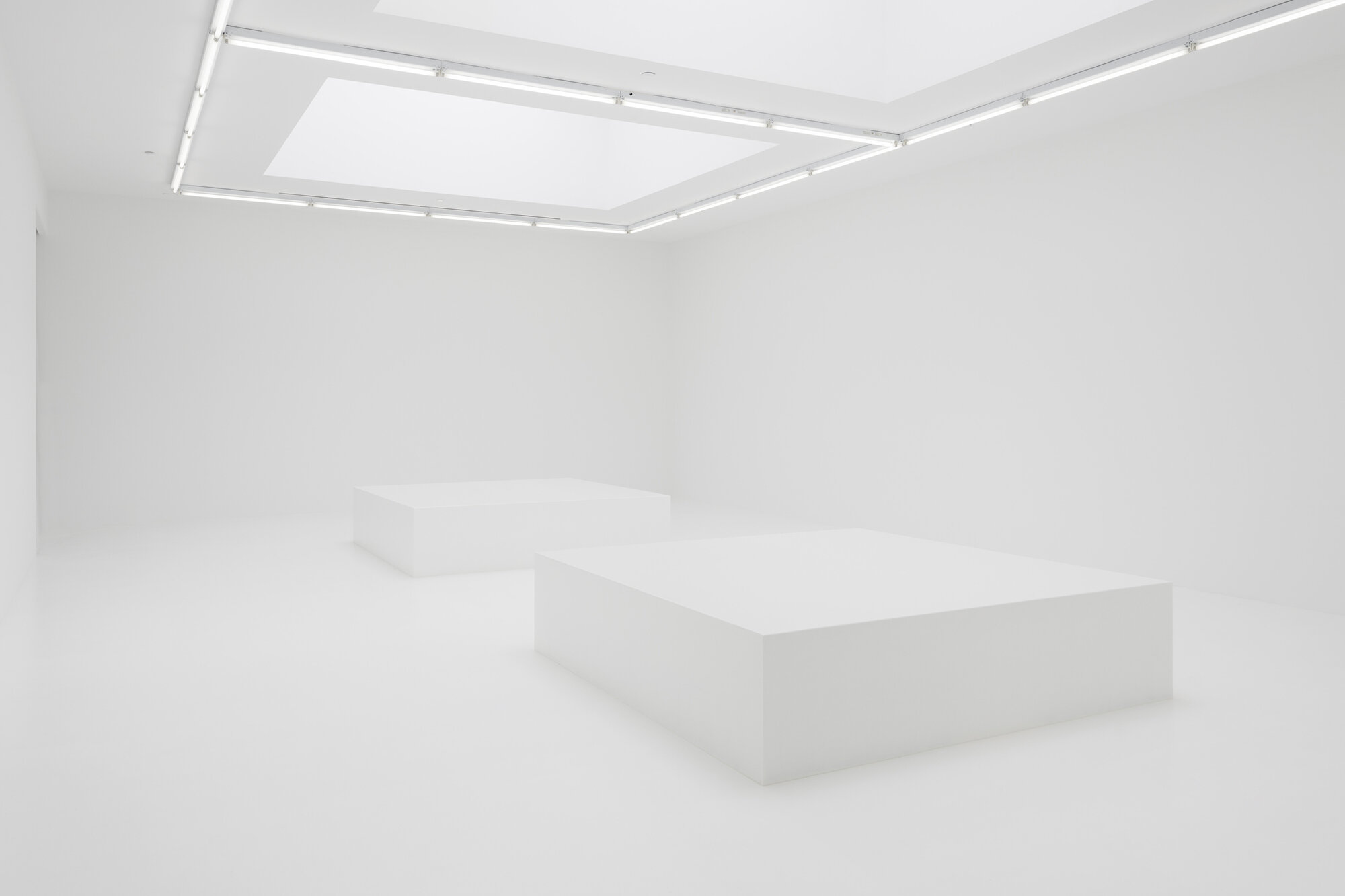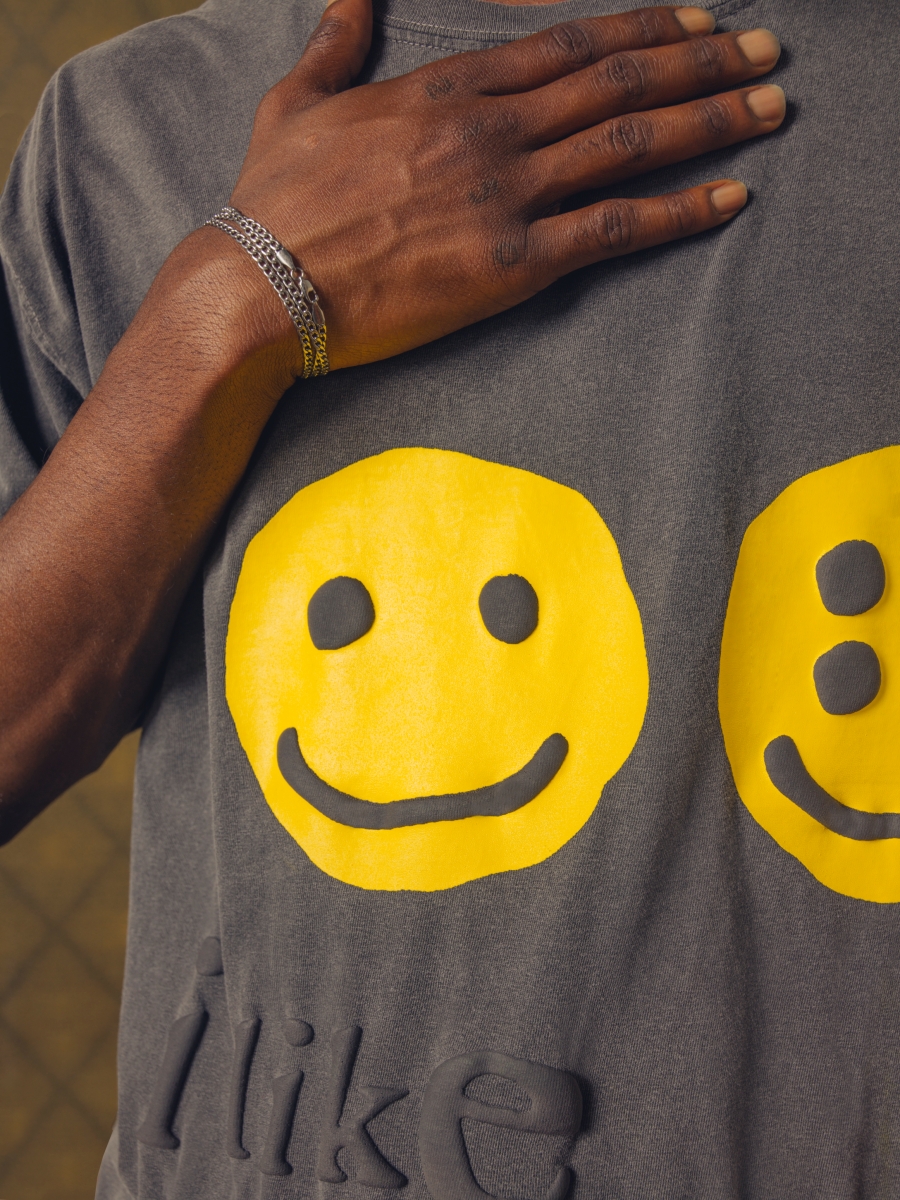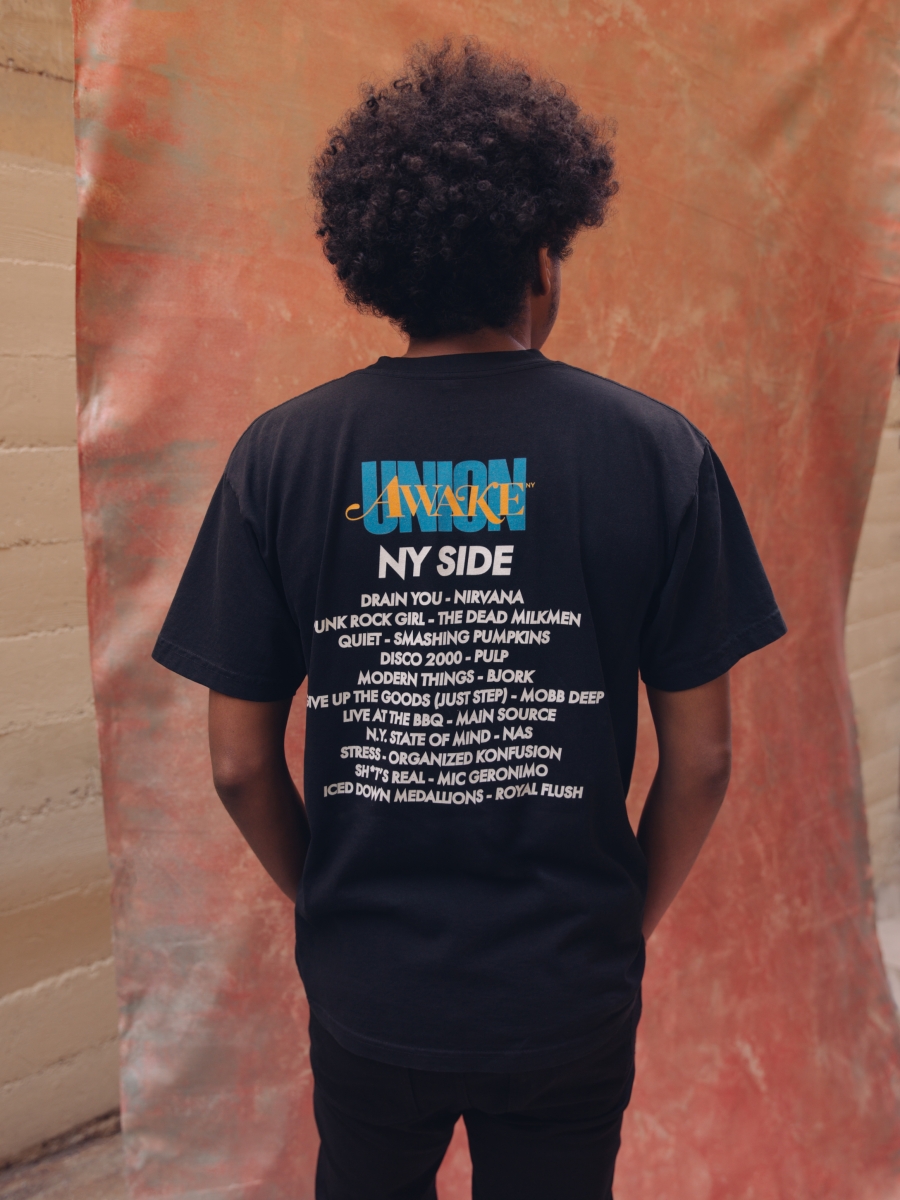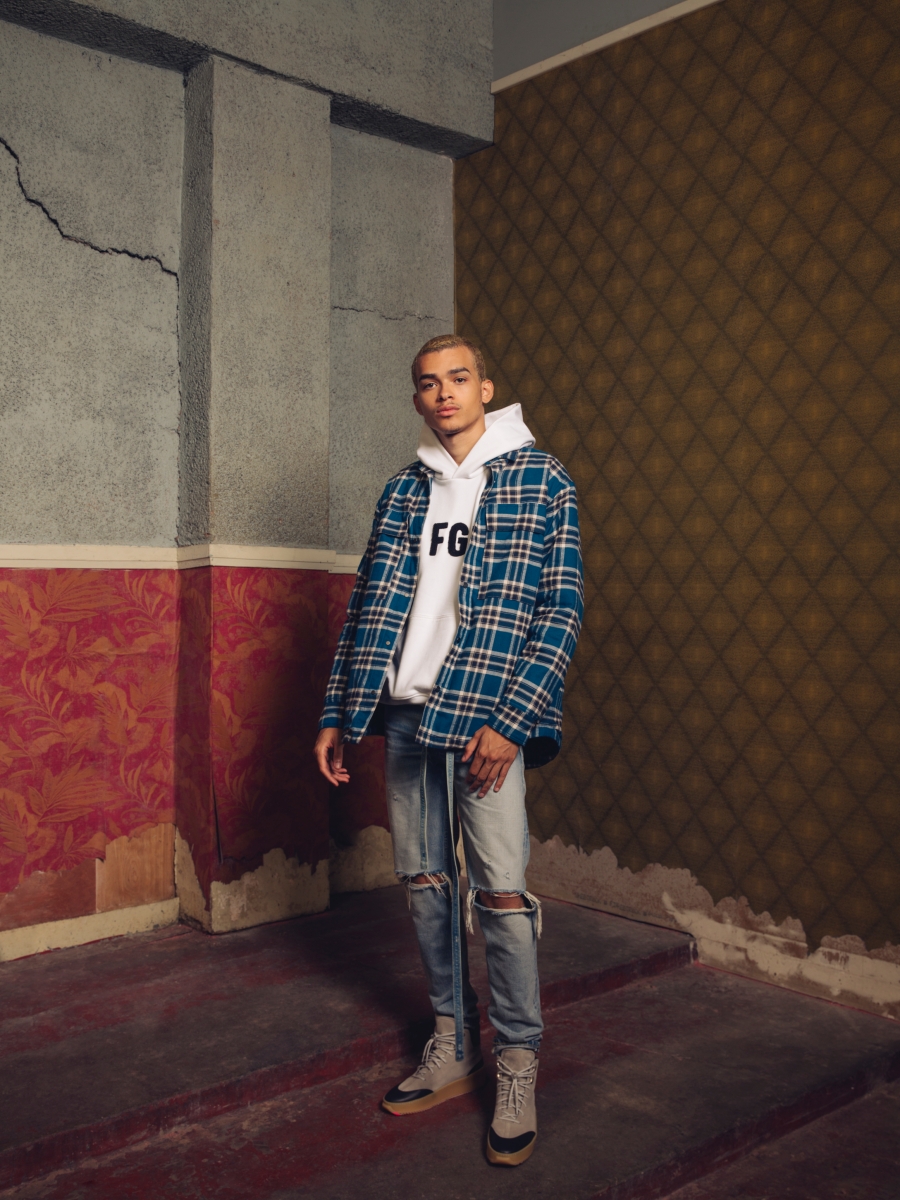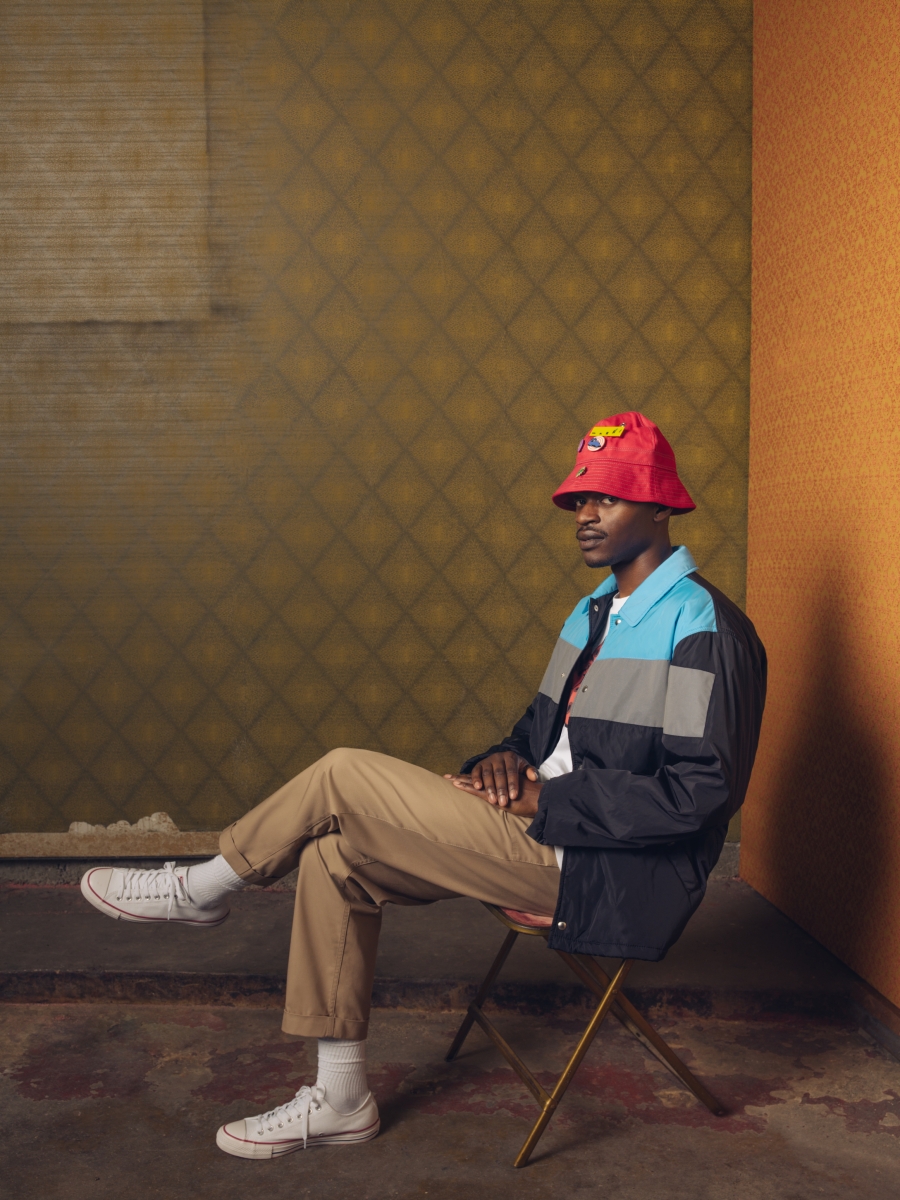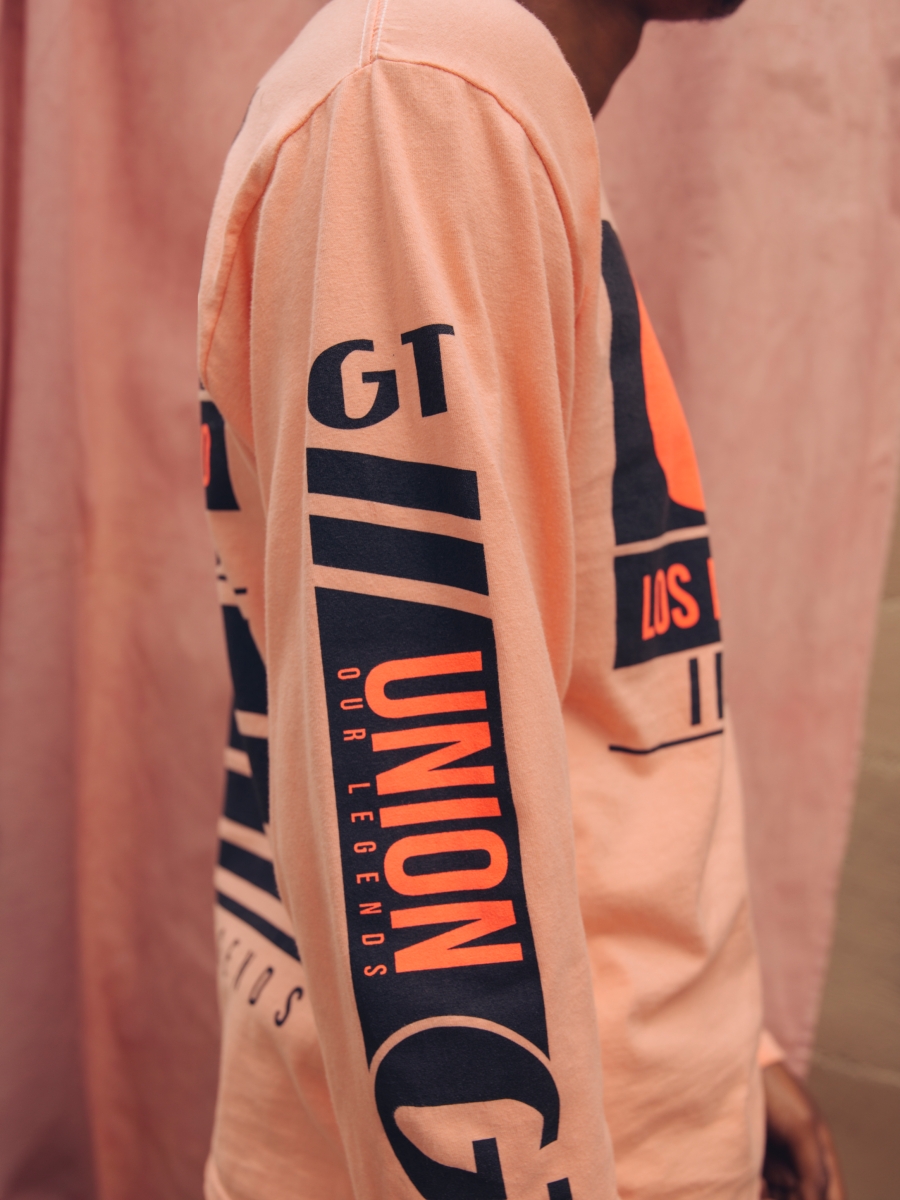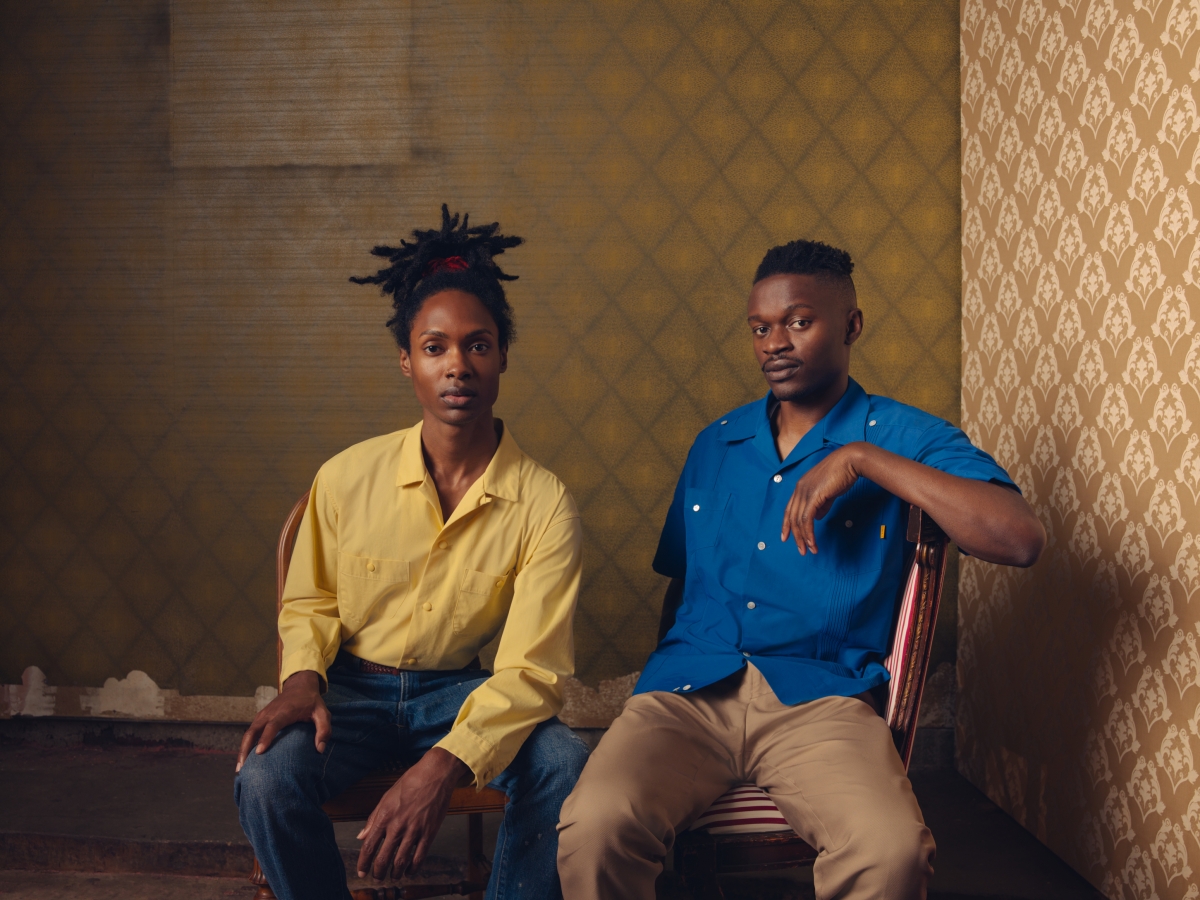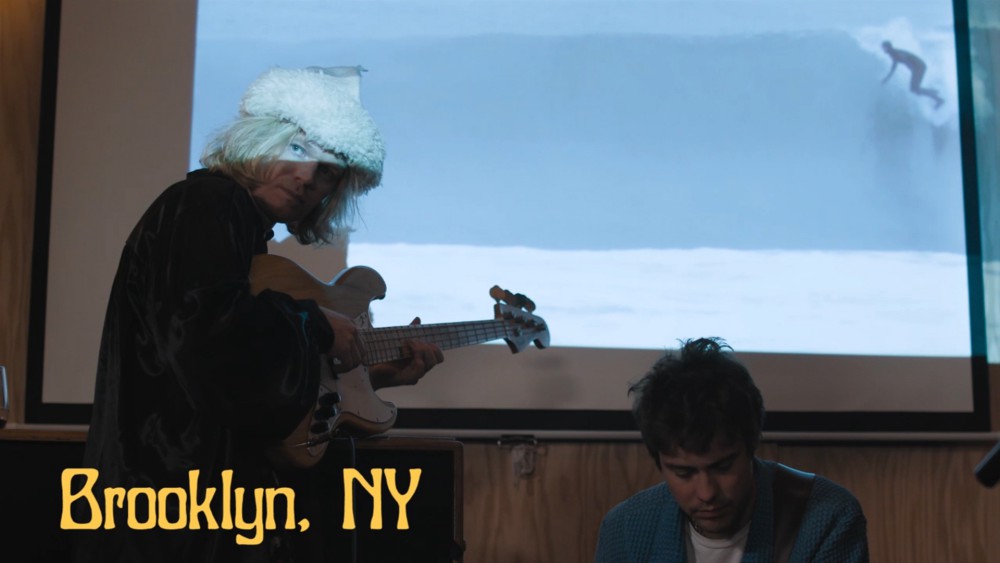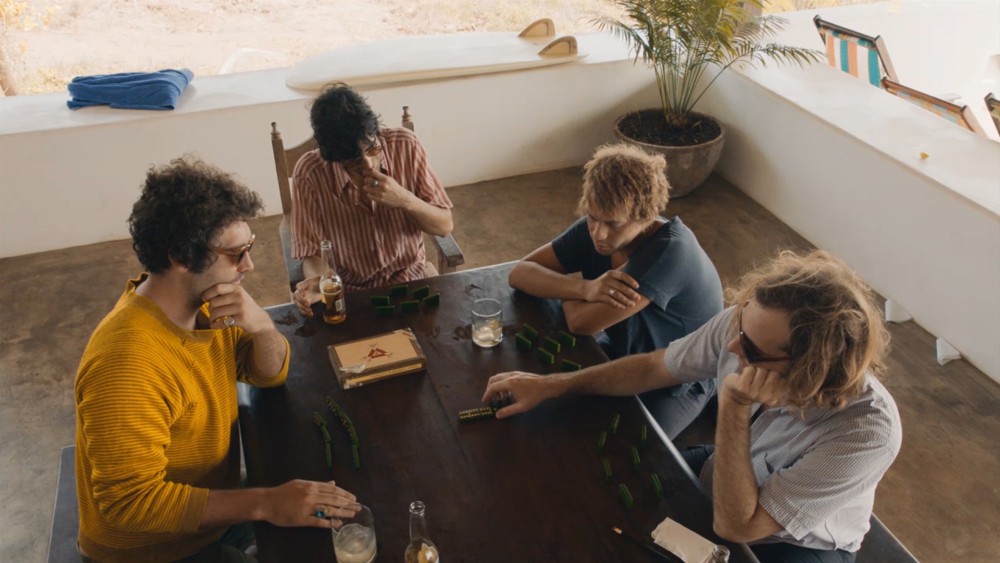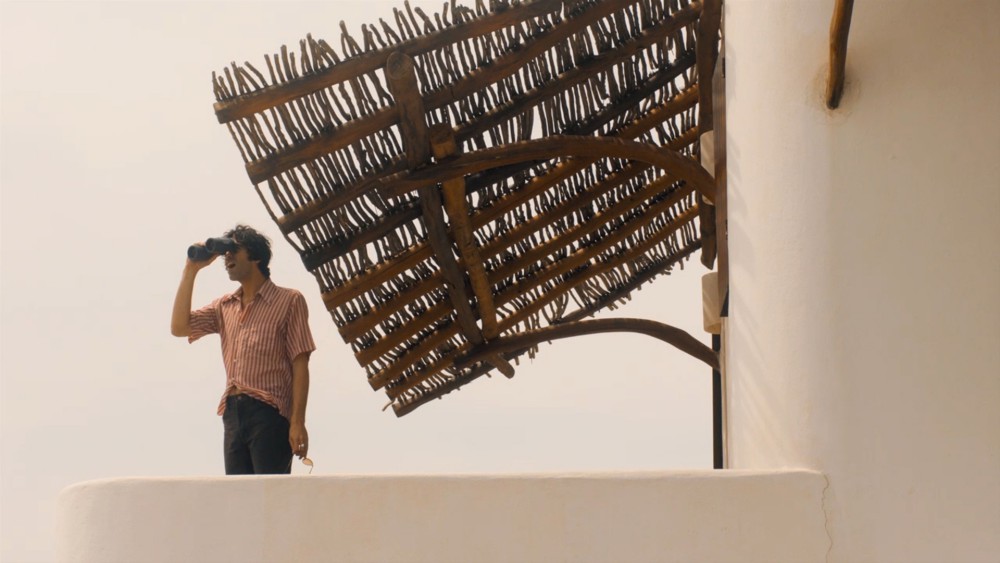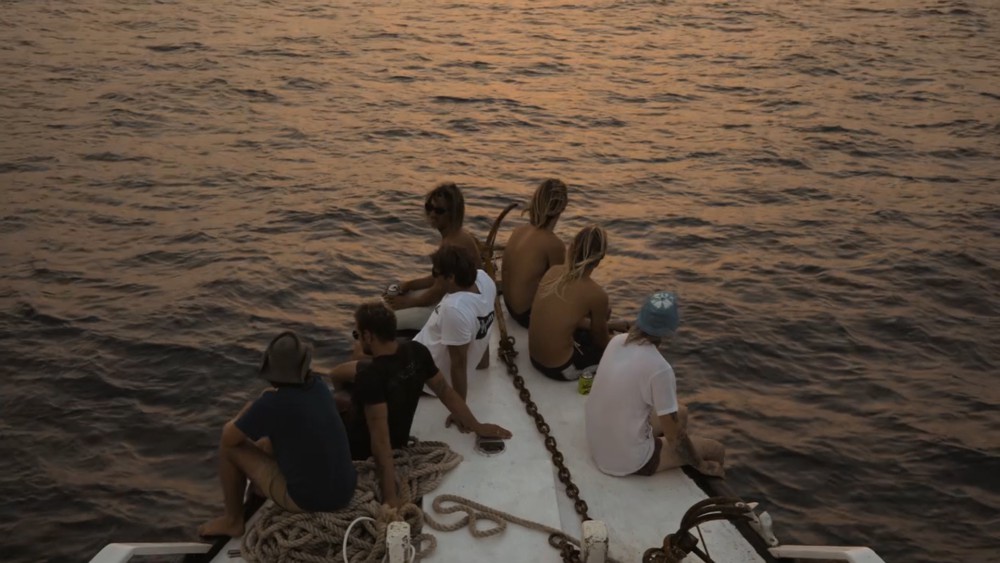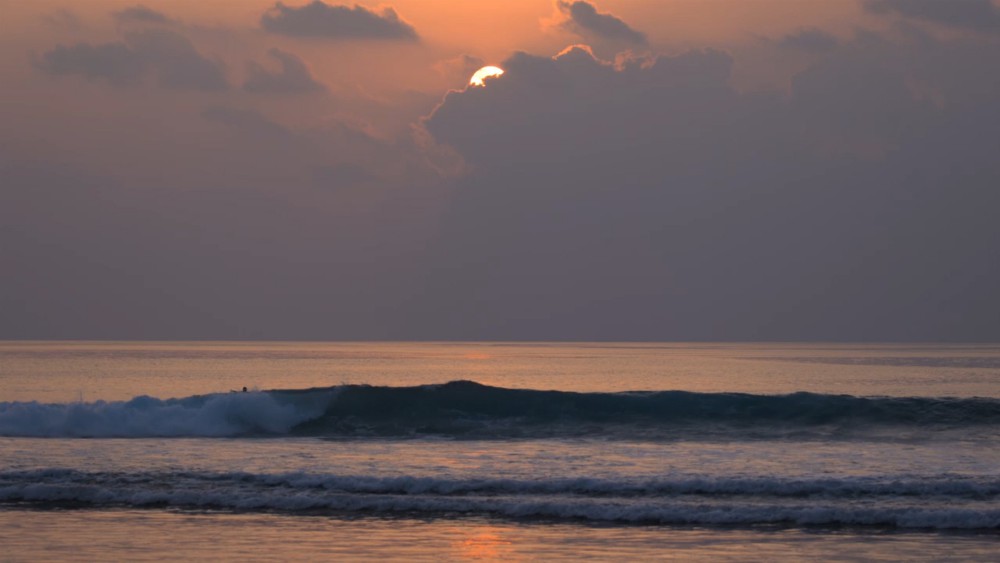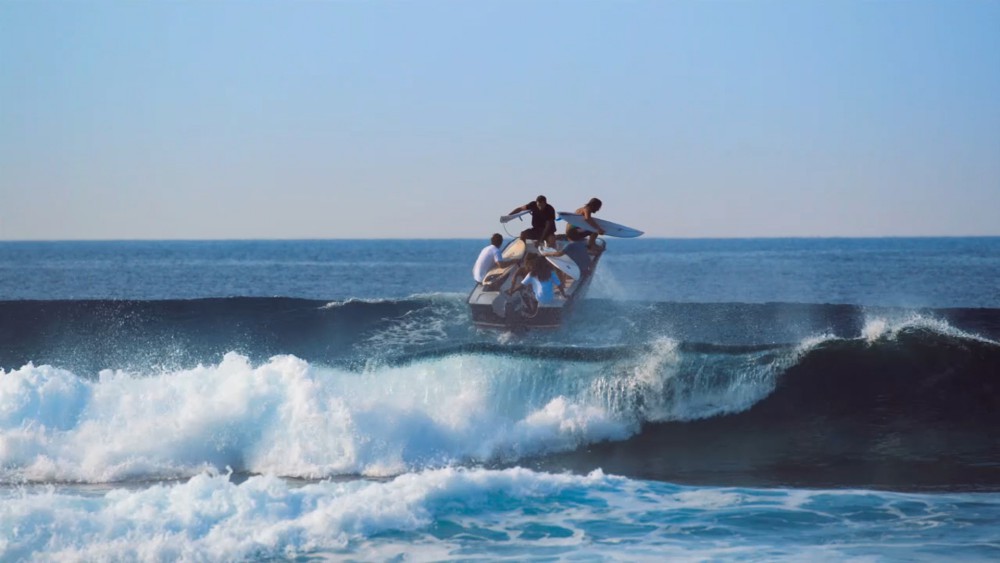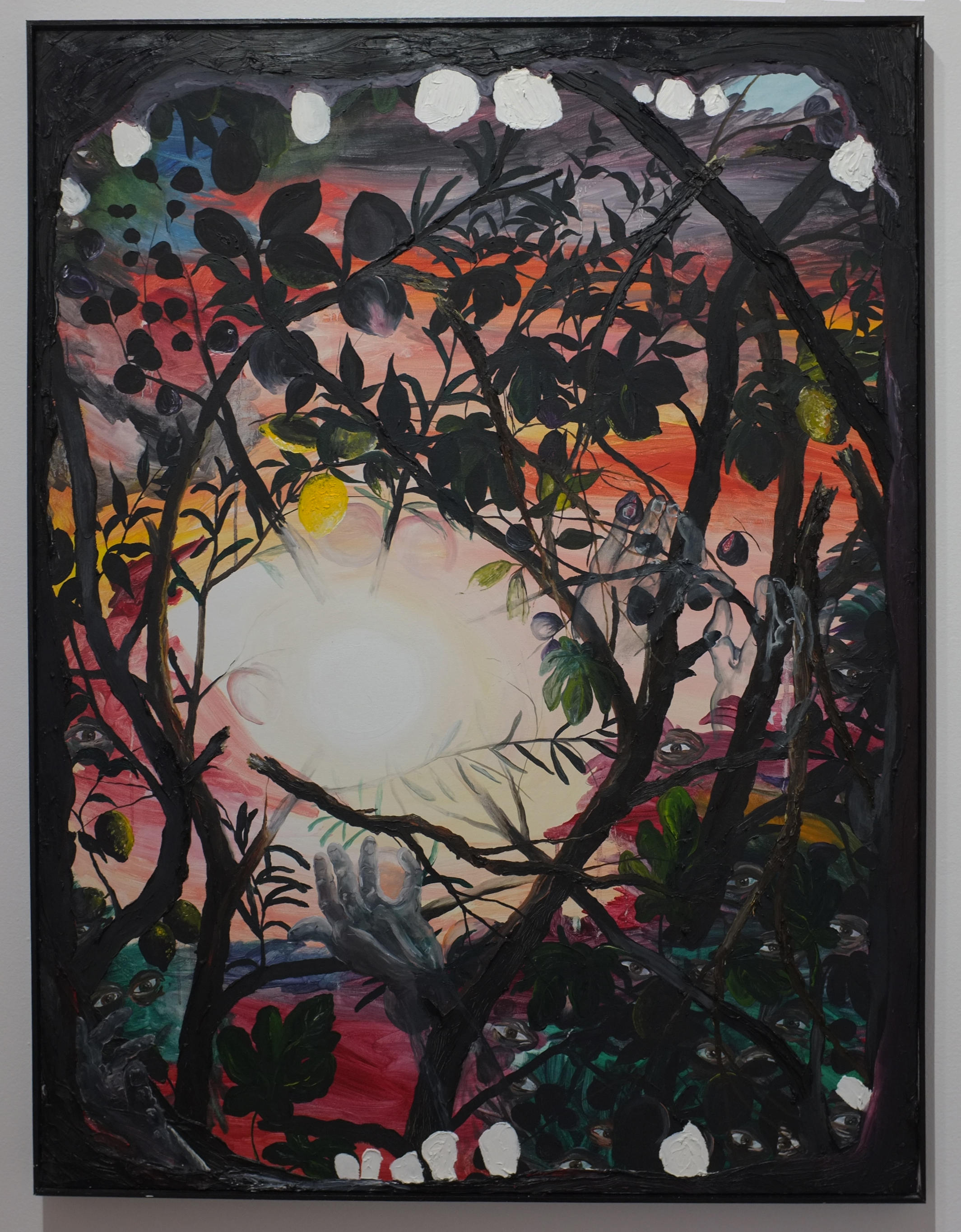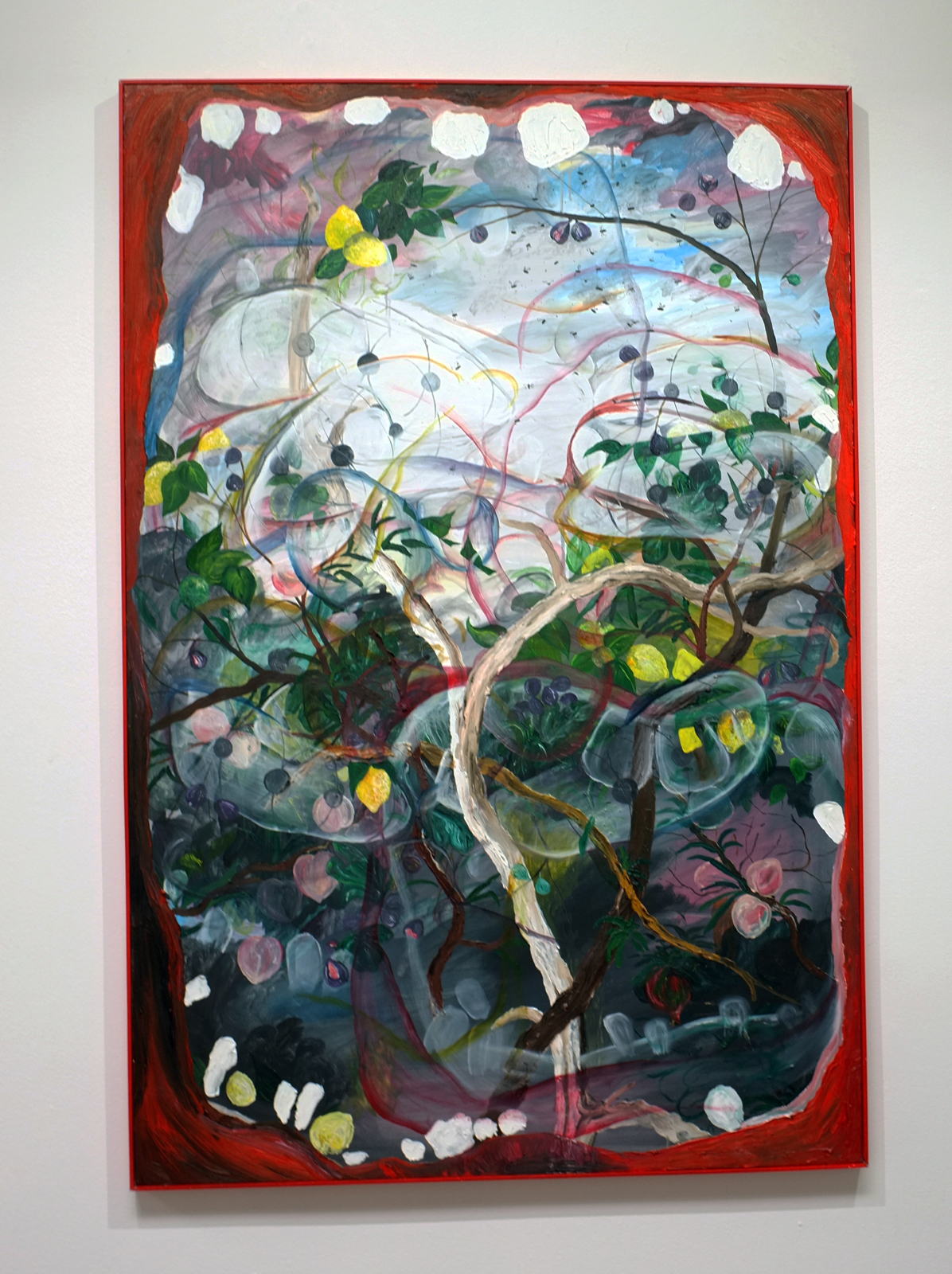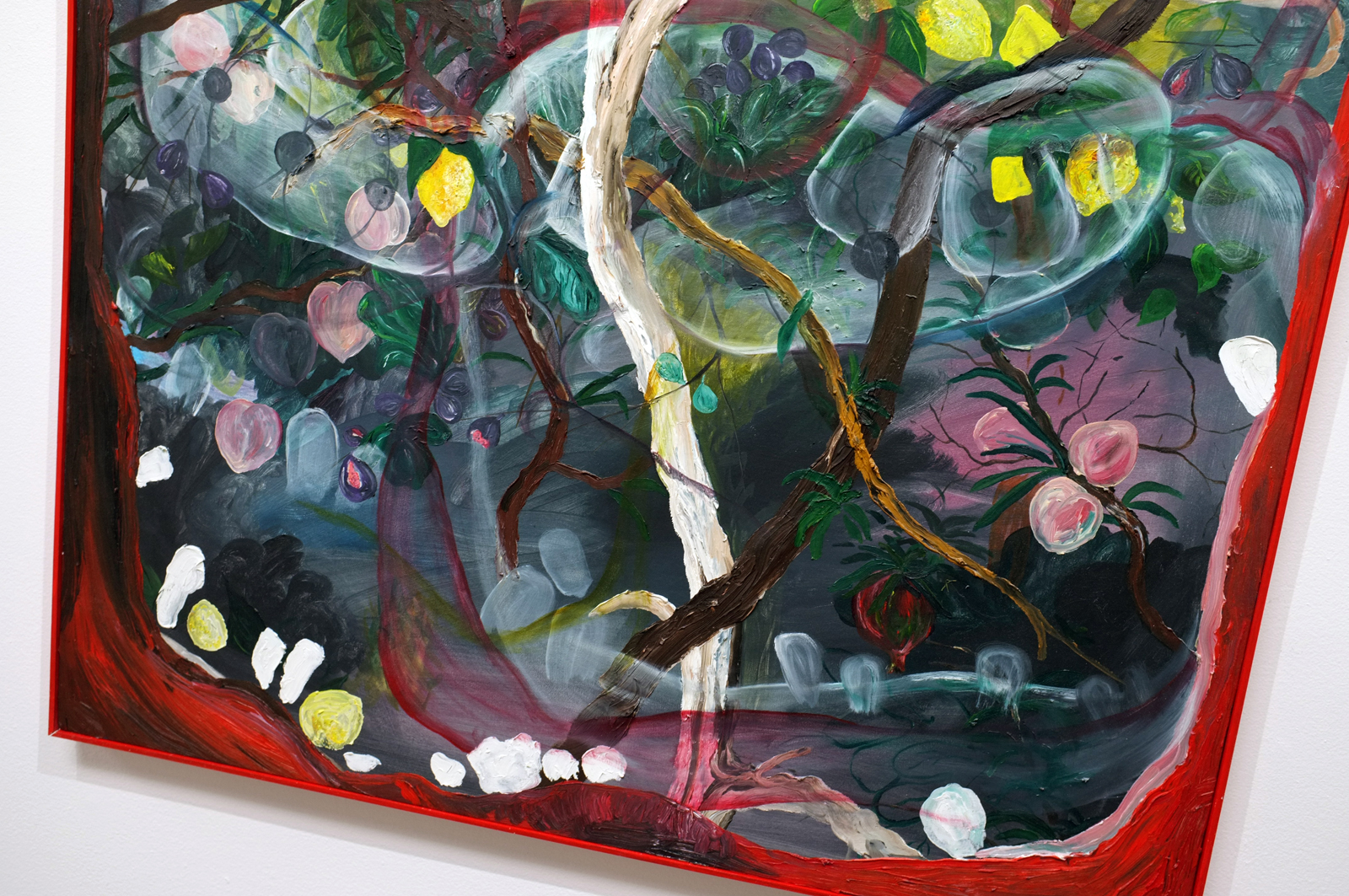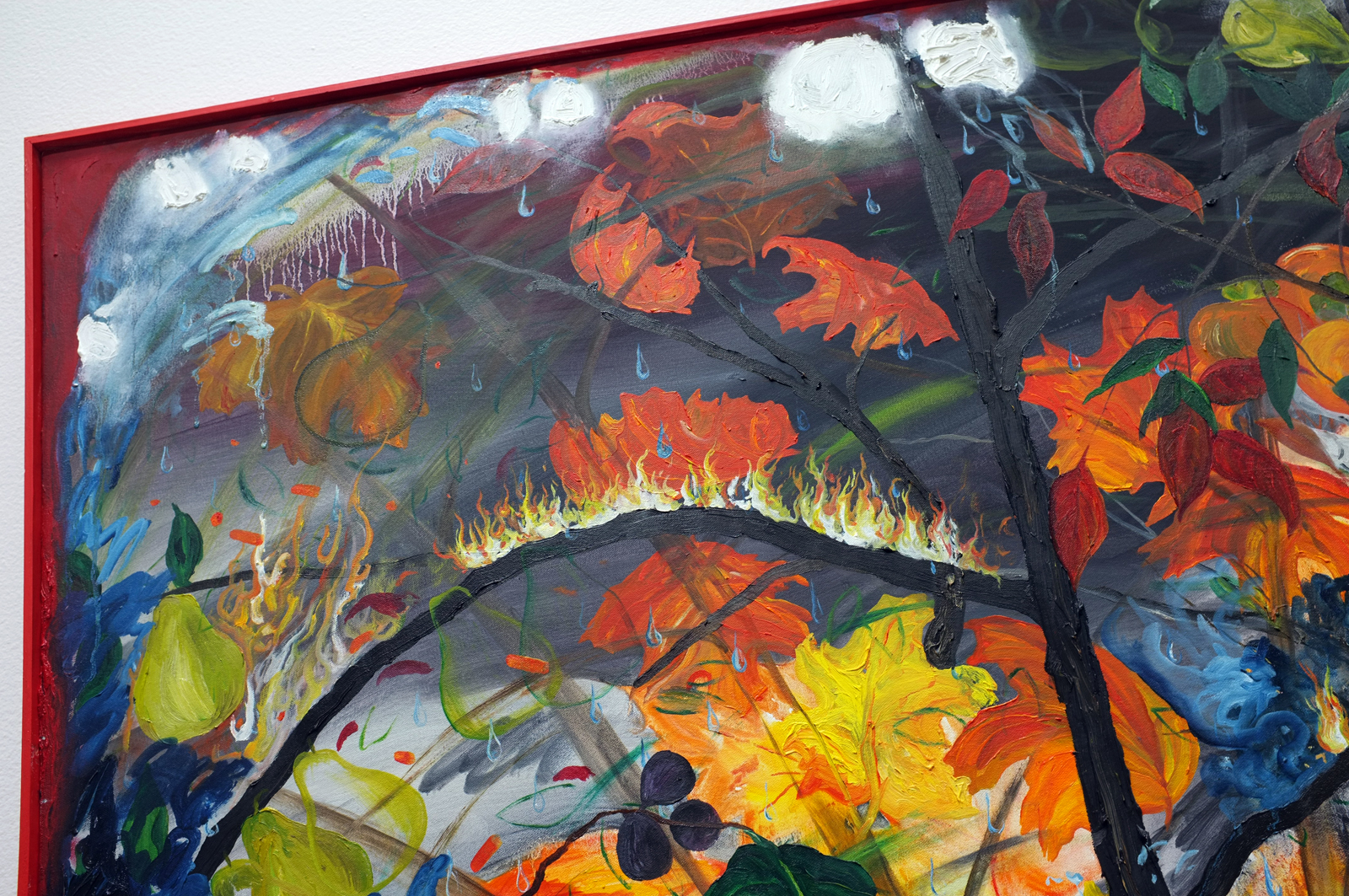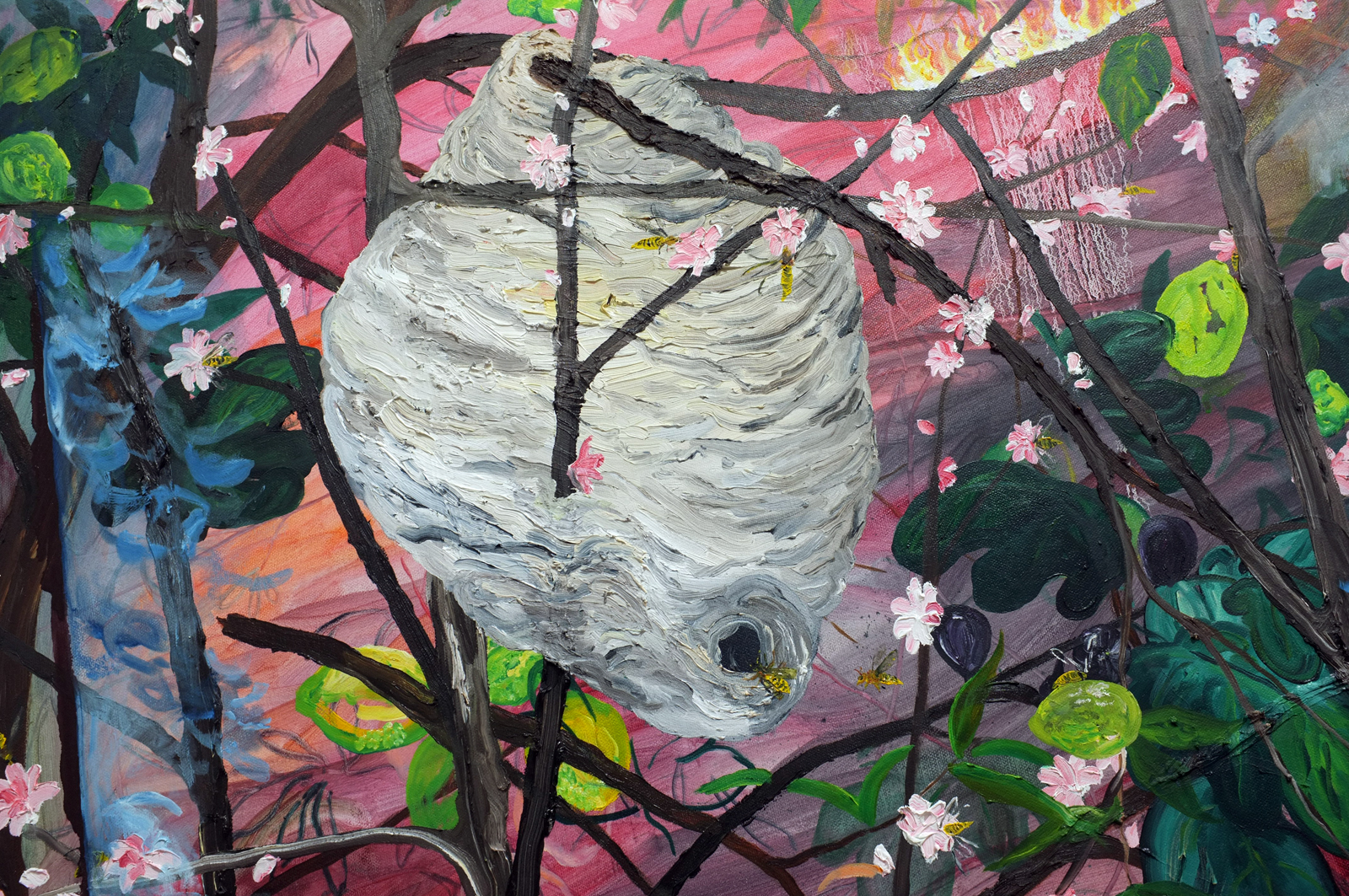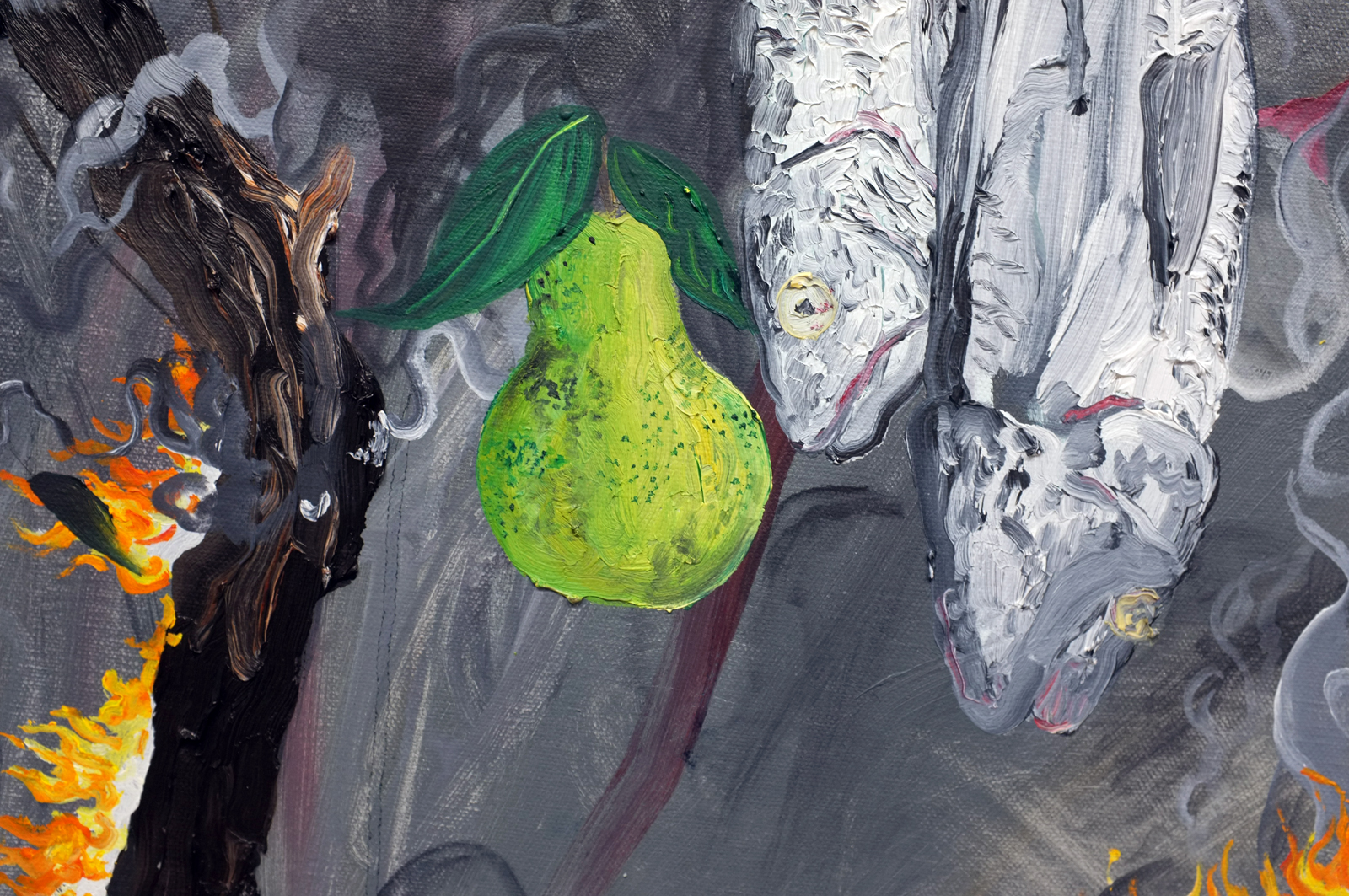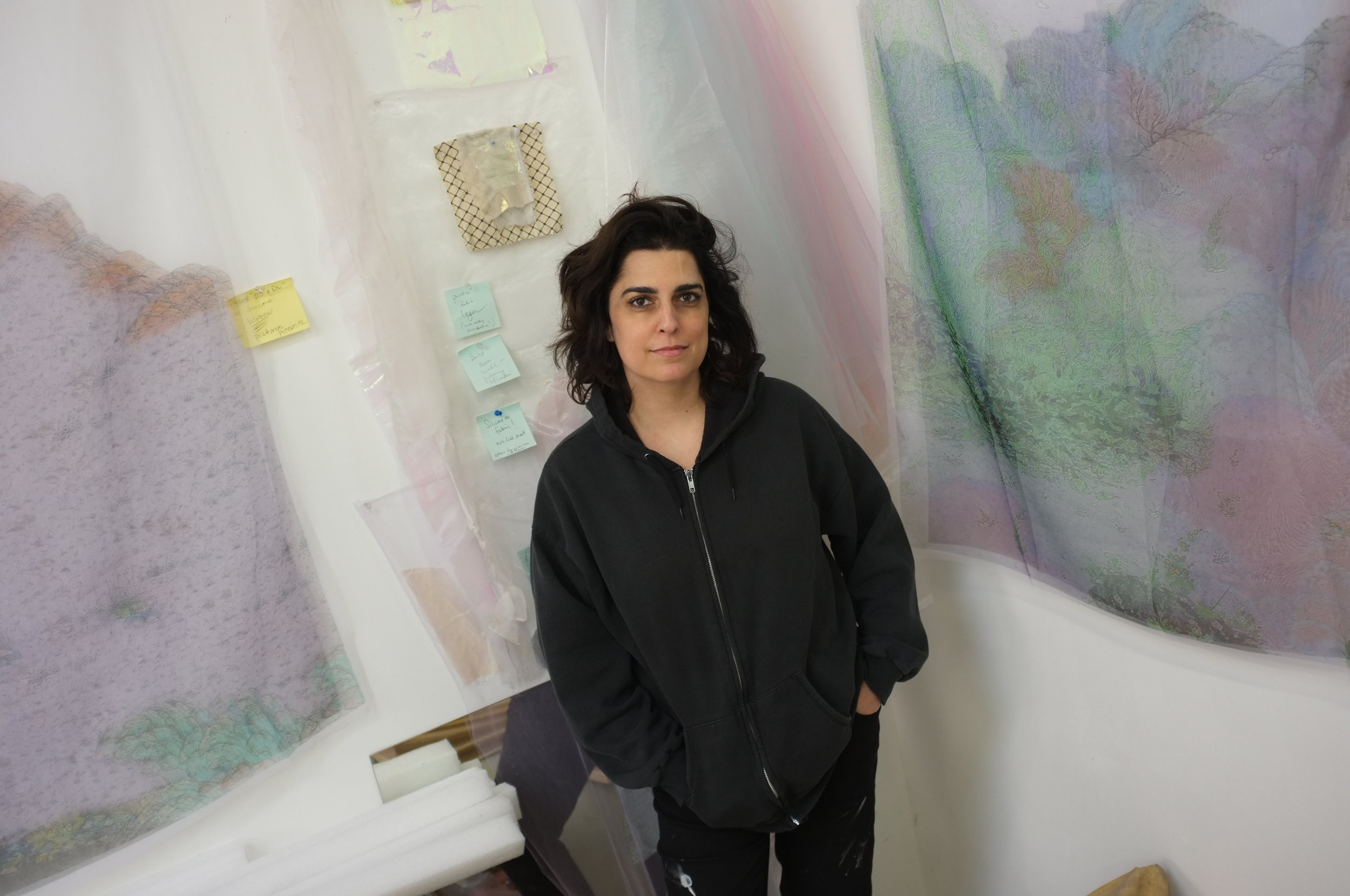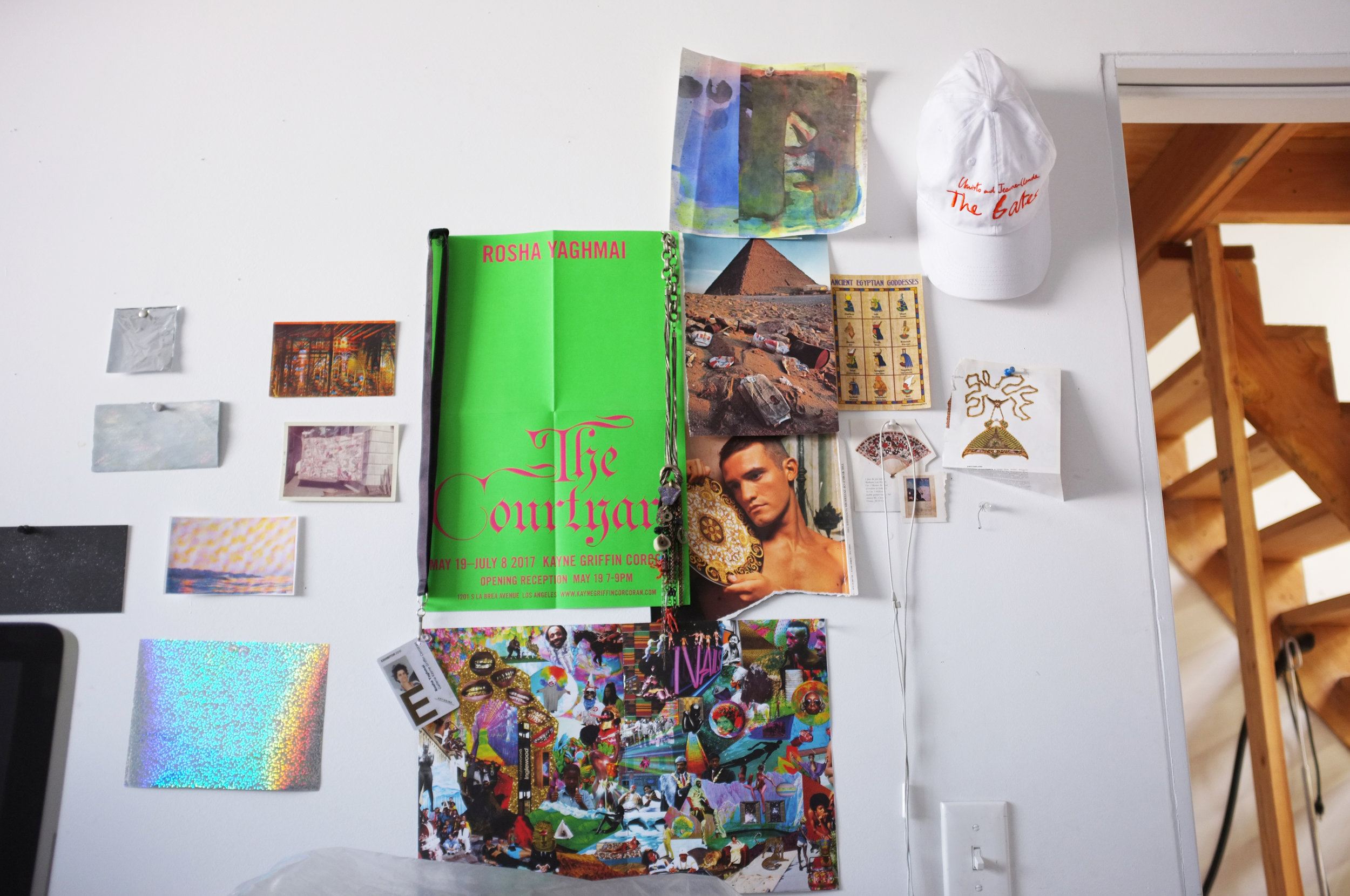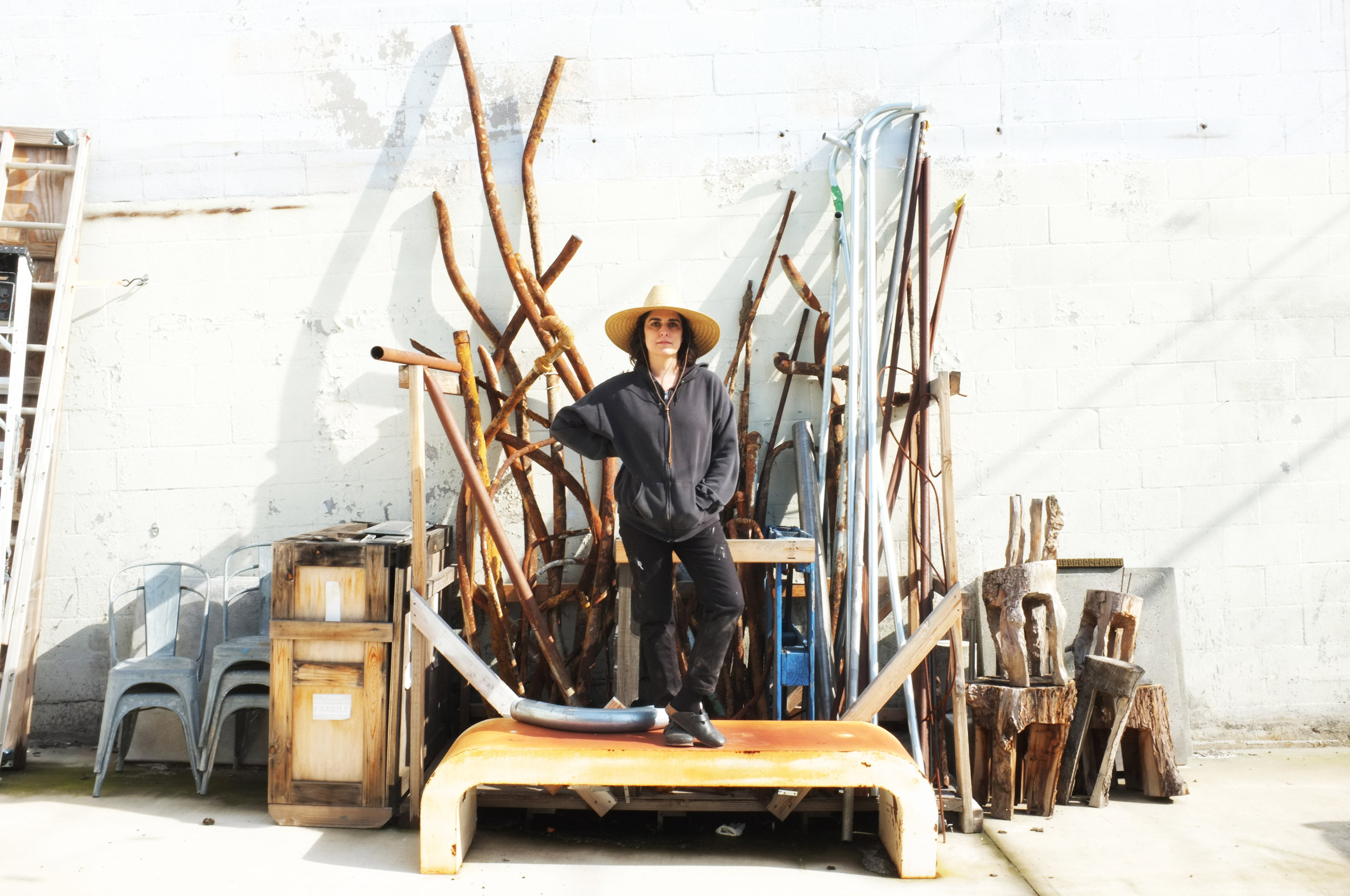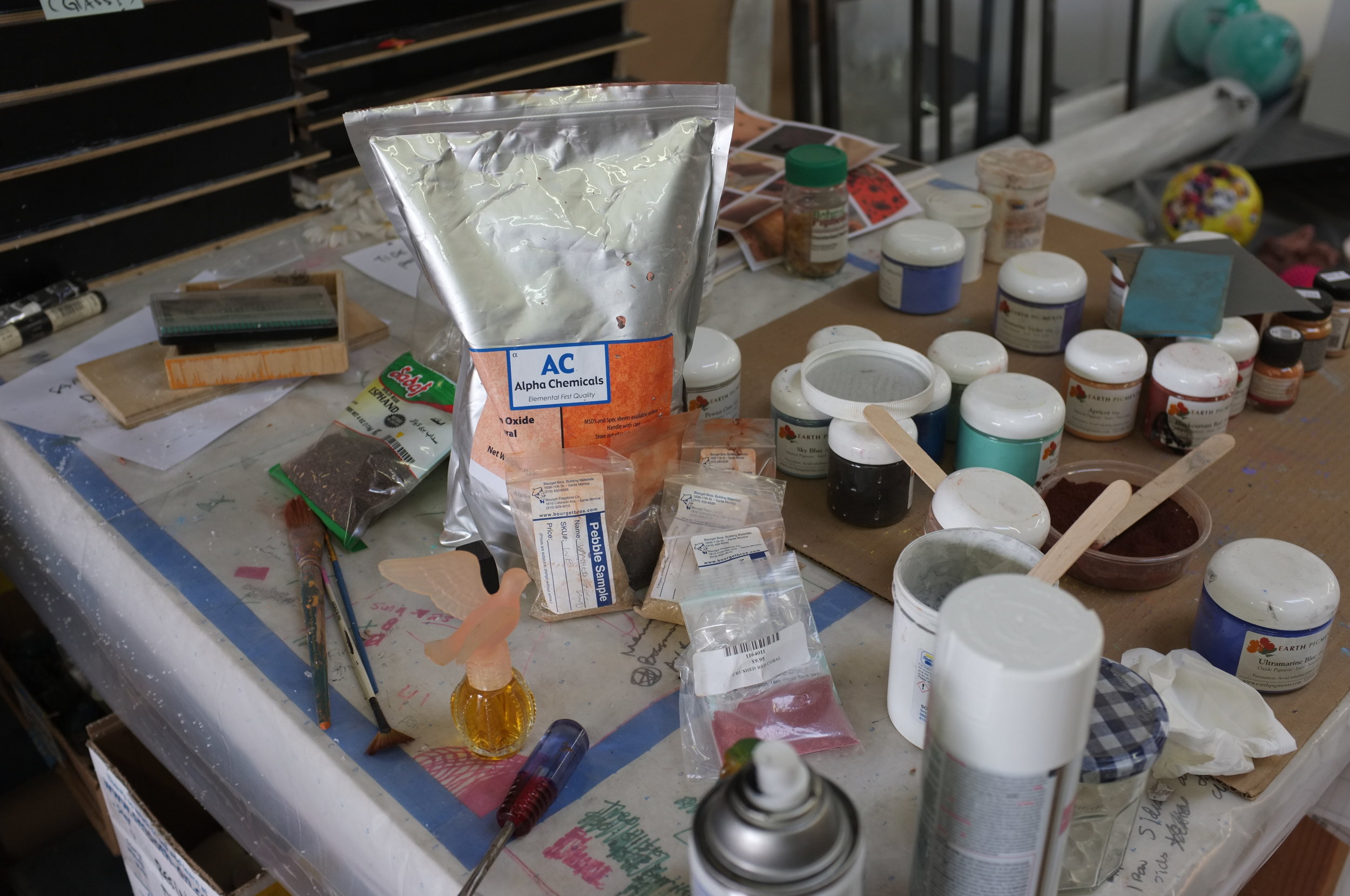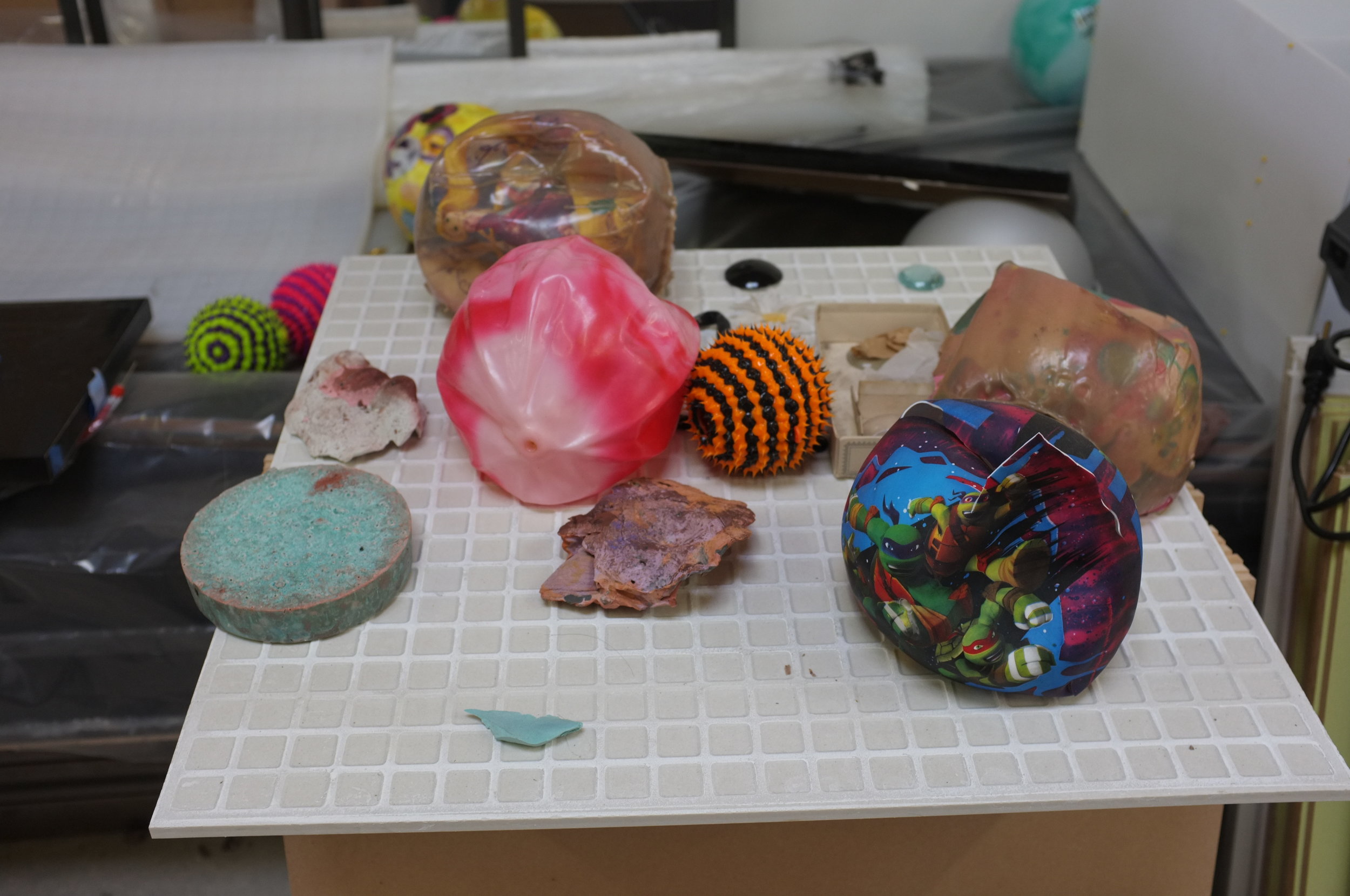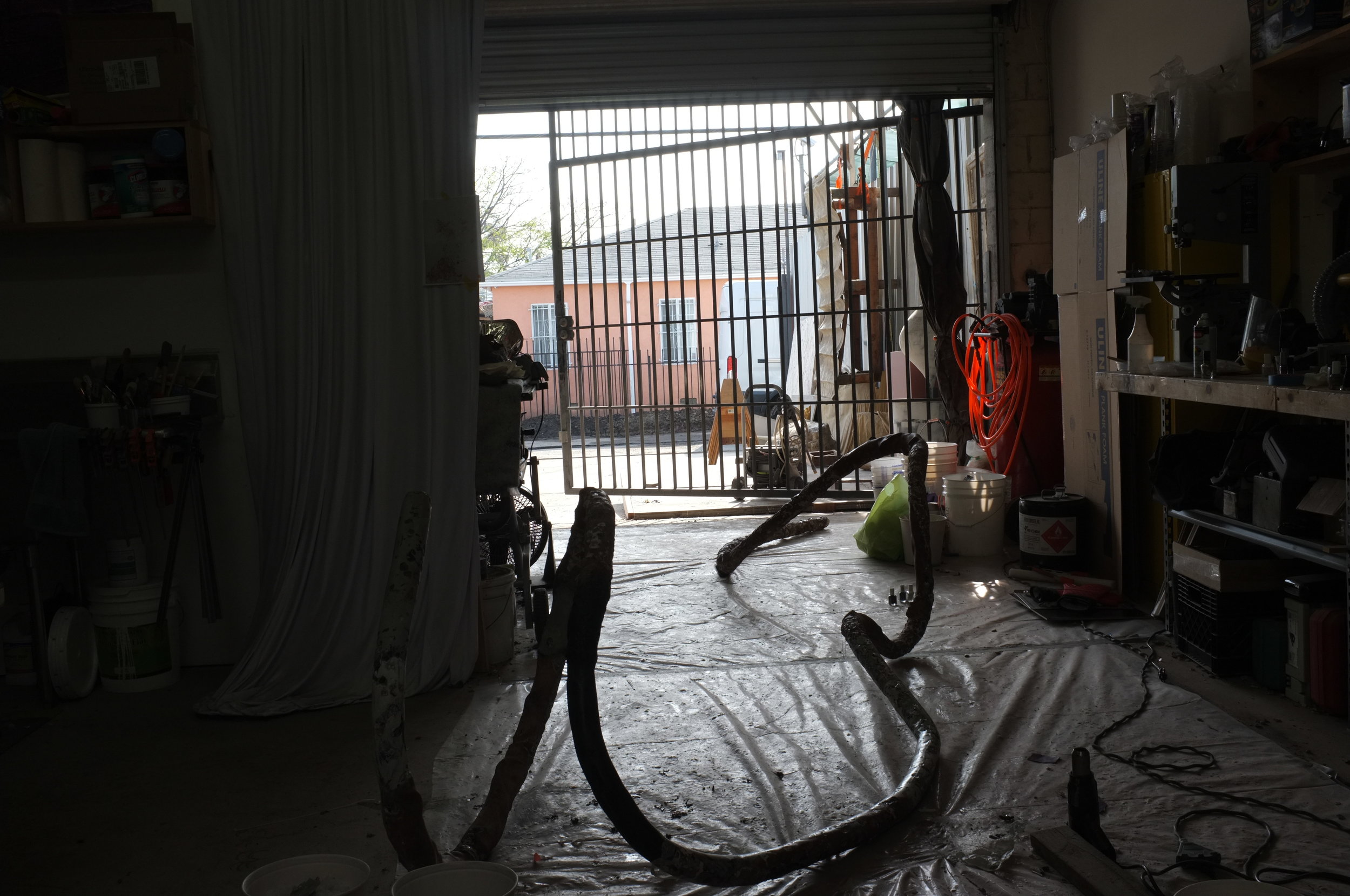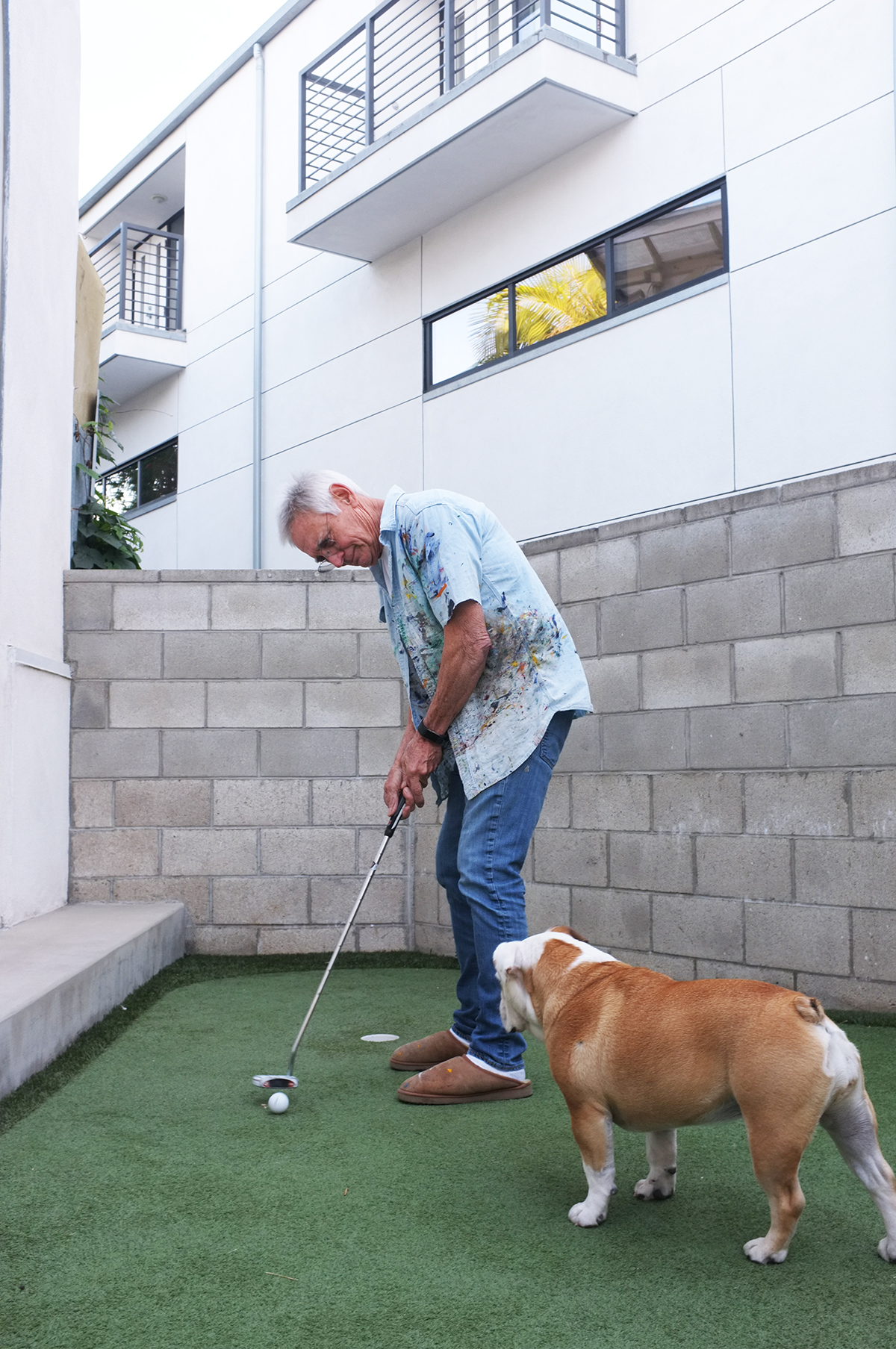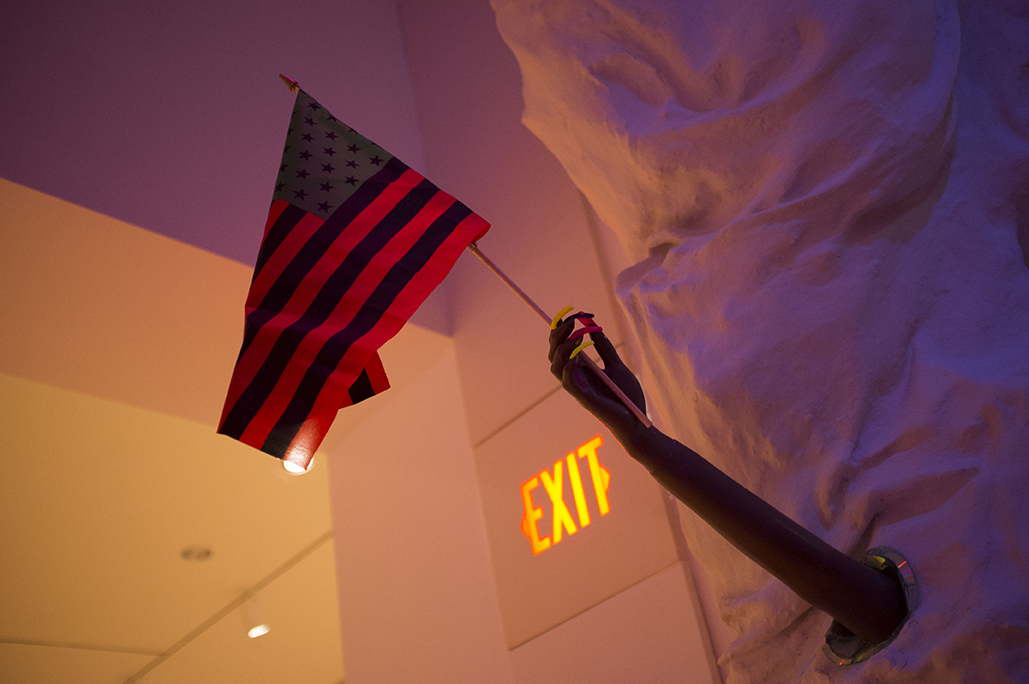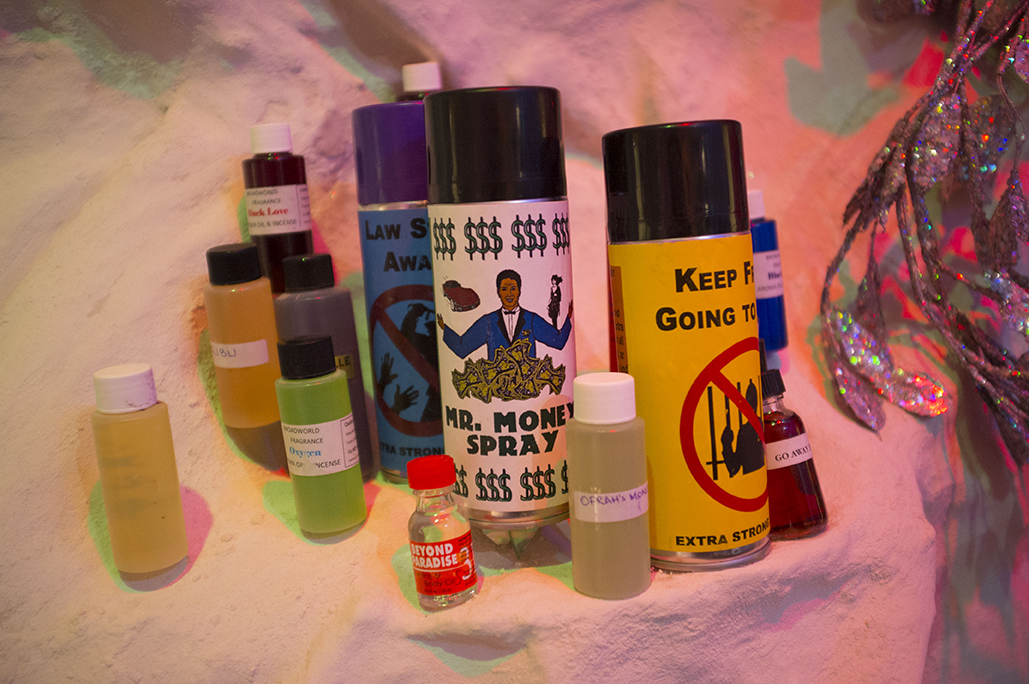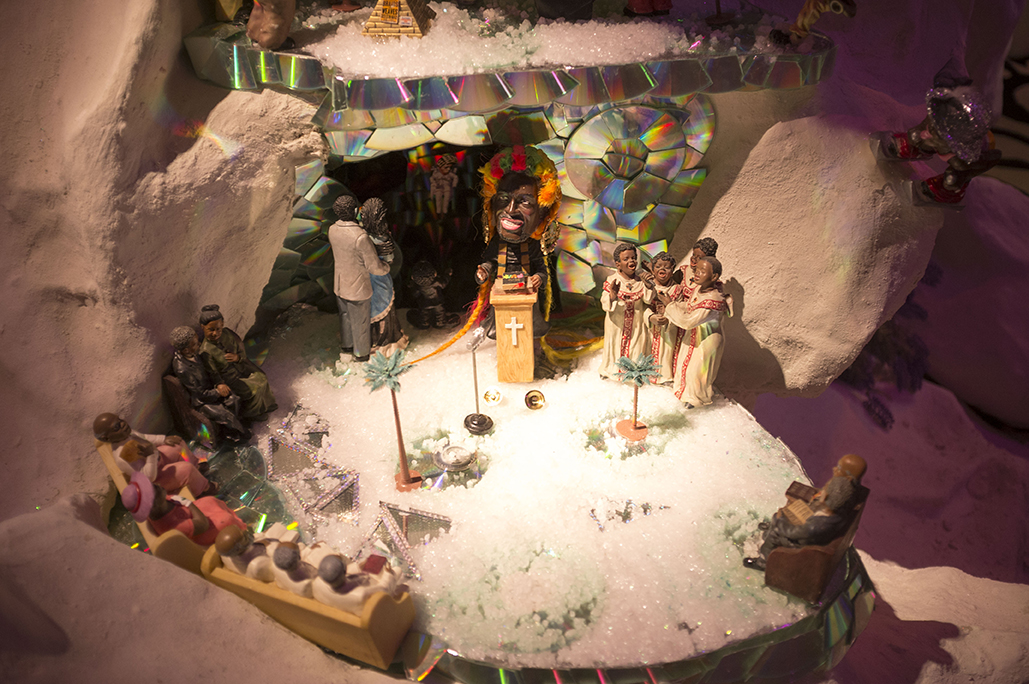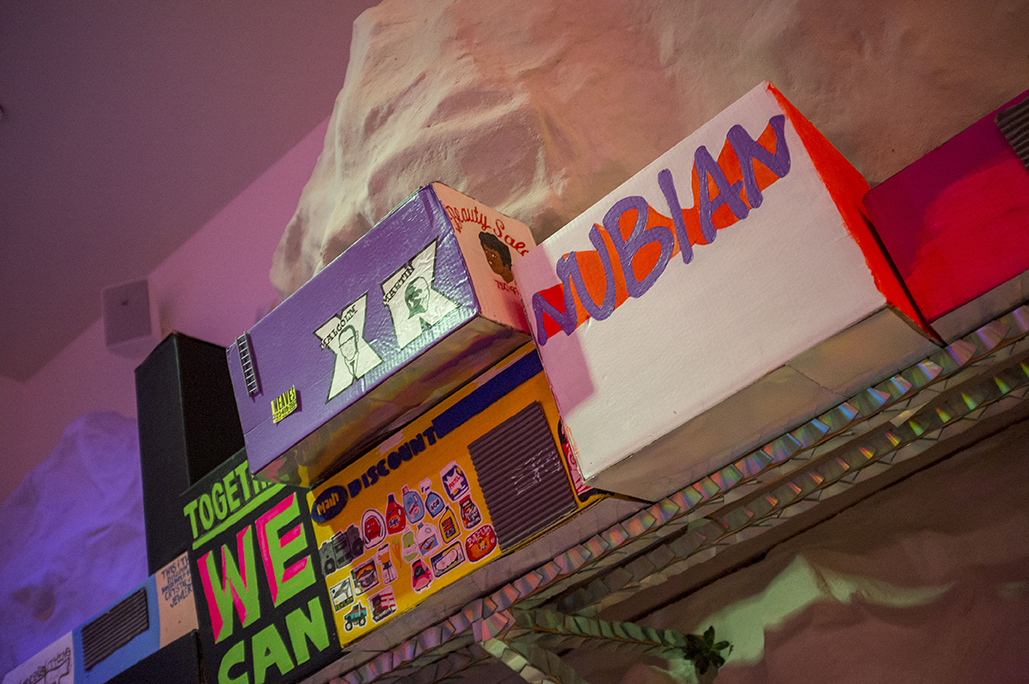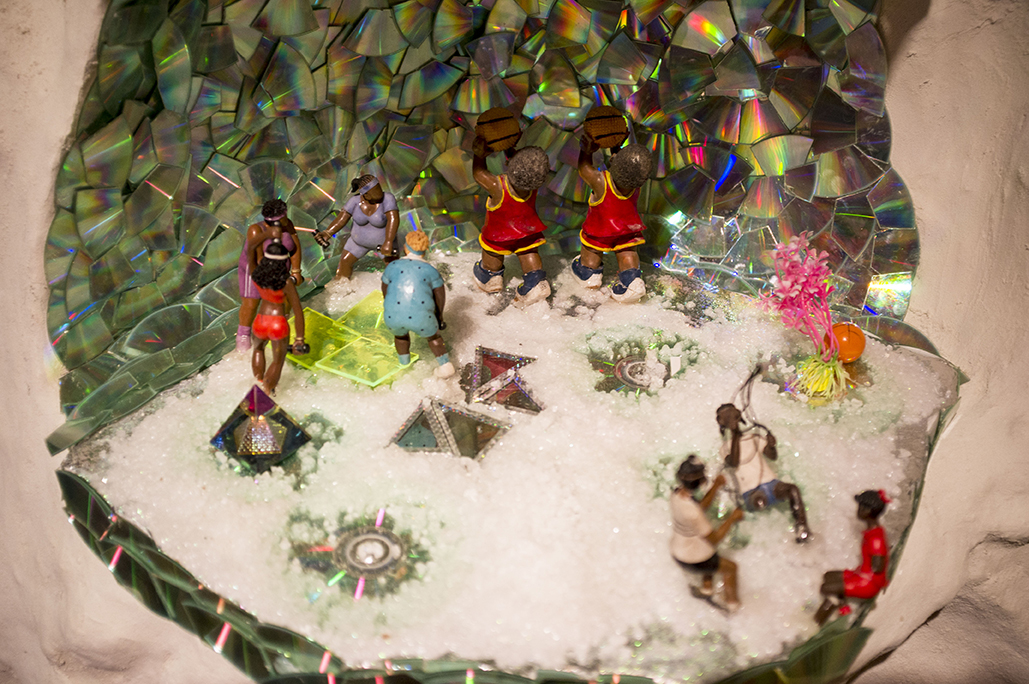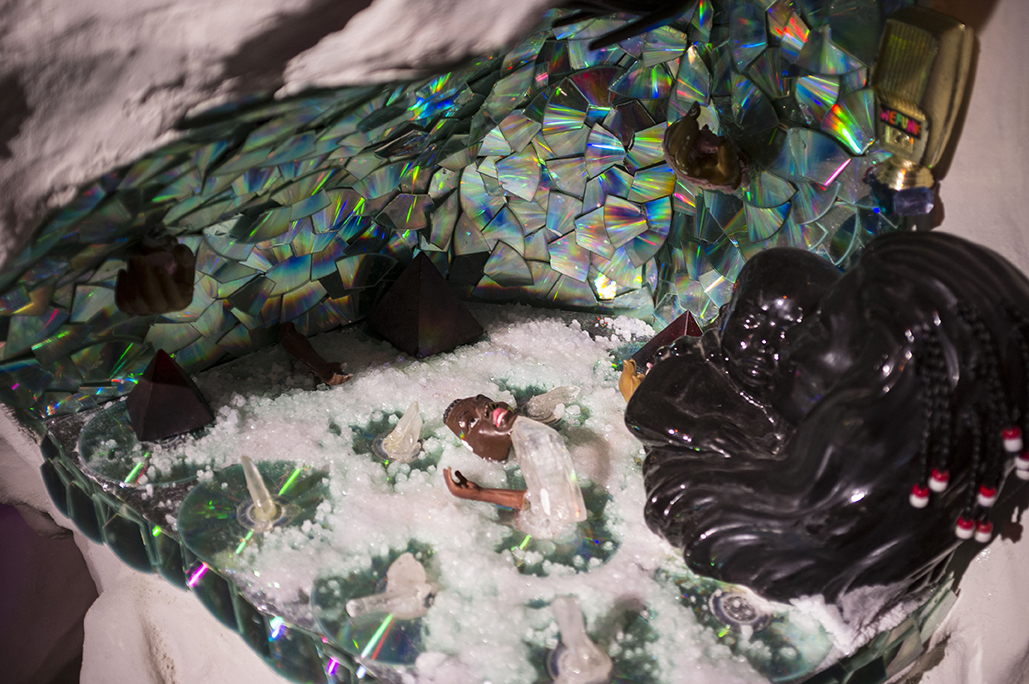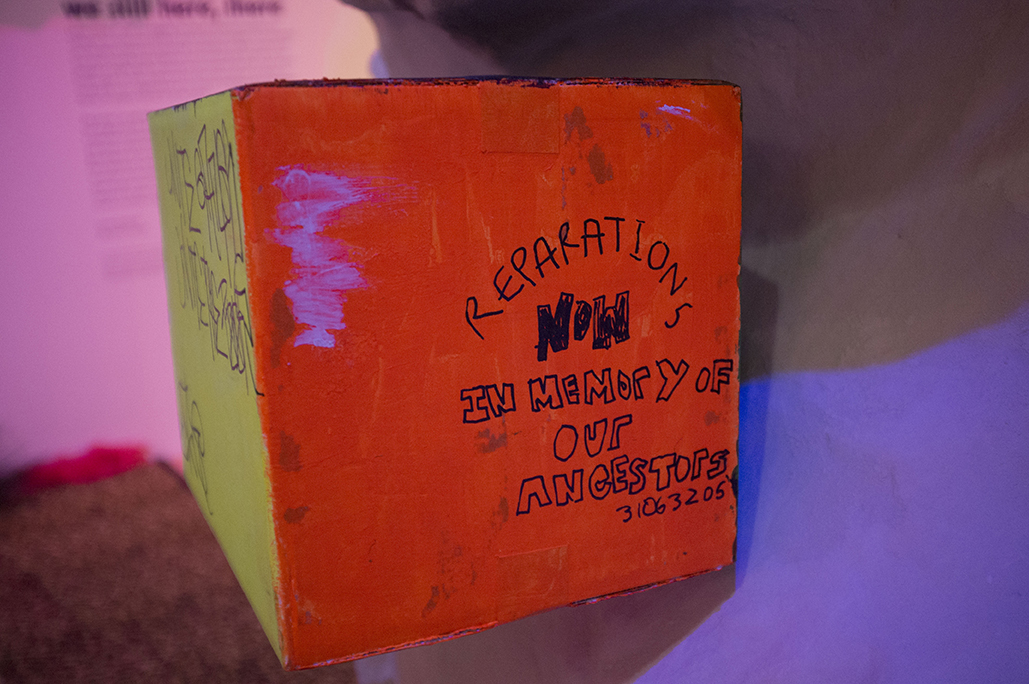text by Karly Quadros
portrait by Joshua White
“Guess who’s at the door, Pee-wee!”
Anyone who was a kid in the late-80s (or a lover of camp, kitsch, and tactile production design in any subsequent decade) knows the phrase well. Emanating from a jolly windowpane, it signaled the entrance of any number of zany characters: a rhinestone cowboy with an animated lasso, a bobbleheaded salesman, a 1950s beehive towering to the ceiling. Every Saturday morning at 10 a.m., the cast and characters of Pee-wee’s Playhouse pogo-sticked around a mid-century, candy-colored dream home, stuffed to the brim with puppets, papier mache, and wallpaper only the 80s could produce. Pee-wee Herman – the impish avatar of host and comedian Paul Reubens who is the center of a new two-part documentary, Pee-Wee As Himself, airing on May 23 – was the clear heart of the show, but it was the world of Pee-wee’s Playhouse that had kids wishing they could live inside their own surrealist bungalow.
Artist Ric Heitzman worked on Pee-wee’s Playhouse as a production designer, puppeteer, and voice actor for characters like Mr. Window, Cool Cat, and the Salesman. Even after the show ended in 1991, Heitzman’s art is packed with a boundless gestural joy and cast of characters straight from Sunday morning cartoons. Working across comics, cartoons, and commercial animation, Heitzman’s Escher-like paintings have a technicolor psychedelia to them, packed densely with explosions of color, hatching, and characters romping their way through their worlds.
Heitzman’s new show, Squiggly Dee, is on display until June 9 at Face Guts, a storefront gallery project from artist and former animator Tim Biskup, in collaboration with White Box LA. The two artists got together to discuss Pee-wee’s Playhouse, recurring dreams, and finding the humor in anything.
TIM BISKUP: What’s your favorite animal to draw?
RIC HEITZMAN: I draw a lot of insectoid characters. The first thing that came to my mind is Triceratops because that’s the animal I like the most, but I don’t draw it very often. I think about it a lot. Everything I draw is a mashup. I noticed I draw a lot of things that look like donkey-giraffe compilations. There’s a lot of insectoid things like centipedes and millipedes, things that look like human heads and insect bodies. That’s been in my head for a long time. It’s probably from playing with bugs as a kid. Kept everything in boxes with wax paper over them.
BISKUP: Of all the Pee-wee’s Playhouse characters, which one was the most like you?
HEITZMAN: Mr. Window. Mr. Window is the most open. Mr. Window [dips into the character’s cadence] is also just my voice. ‘Hey, Peewee, guess who’s at the door!’ That’s basically all I said. ‘It’s the King of Cartoons!’ I liked the character of the window. I liked it because it was really happy. All those characters were happy, but that particular character was big and happy. Plus, I designed it.
BISKUP: Was there one that you didn’t like?
HEITZMAN: No. There was nothing on that show I didn’t like. Even the characters that other people didn’t like, I liked. To me, it was like a sandwich. If you take away something, you don’t know what else would be there anyway. We were recently together as a group, and George McGrath, the writer, said he never liked the salesman character because the exaggerated size of his head always bugged him. But it functioned in the narrative as this irritating thing. It bothered him – it was supposed to bother everybody. That’s the point.
BISKUP: You’ve told me so many great stories about famous people that you’ve just randomly run into: your James Brown story, the Belushi and Akroyd story is incredible, the Dolly Parton story.
HEITZMAN: I was just in the right place at the right time. A lot of people came to [Pee-wee’s Playhouse]. I met a lot of people, not necessarily through Paul [Reubens], but through my associations with Paul when that show was on.
BISKUP: Can you tell me a random one that you haven’t told me yet? Have you met Liza Minelli?
HEITZMAN: No, I haven’t met Liza Minelli. I did go to a drag show when I first moved to LA and there was a really great Liza Minelli imitator.
BISKUP: Cher?
HEITZMAN: Oh yes, I’ve met Cher. She came to the Playhouse. She was on the Christmas show. That was amazing to meet her because she was really sweet.I don’t know how old she was, but she looked amazing. When people came on that show, either they were fascinated by it, because it was like being in Candyland, everybody walking around with their mouths open, or they were terrified.
She was one that was absolutely terrified. Paul introduced her to us before we did the shot. She admitted to us she was nervous because she always did stuff for adults and she didn’t know how to do this. Paul was like, “Don’t worry about it. Just play it the way you play it. Don’t worry about who it’s for.” It was just funny to see someone who does these giant stage shows and performs all over the world, and they come on set and they’re insecure about it. You wouldn’t think somebody that big would be that vulnerable.
BISKUP: The way that you’re talking about it gives me a great picture of what it was like to work there and the amount of vulnerability it created in people whether they were feeling joy or fear.
HEITZMAN: Most people felt joy. That’s the thing that I can say that I’m proudest of about that show. You were able to convey a pure sense of joy. You do that too. Your stuff has joy in it. To me, that’s the best thing in the world. It’s harder to be funny than it is to be serious.
BISKUP: It’s vulnerable.
HEITZMAN: Comedy has tragedy in it, but it still has to be funny.
That show afforded us, at least afforded me, a view into this world that I never expected to have. I didn’t come out here to do that. I always just wanted to be an artist. In fact, when we first got an Emmy, I was like, “What is that?” I always heard that term, but I was like, “What is an Emmy really?” I remember when they said, “You won an Emmy,” I was like, “This is great, but could I get a show somewhere? Show my art?”
That’s what I wanted. In other words, if you’re not going for this stuff, you look at it slightly differently. It was a window into a world that I never thought I’d ever have a window into. I was always like, [ silly voice] “Golly!”
BISKUP: [similar silly voice] “Look at all this cool stuff!”
HEITZMAN: Some of it was cool, but also the personalities! Like you said, I have stories. I literally have seen every kind of behavior on set that could ever happen: tantrums, people punching walls, people throwing themselves down in the middle of a scene crying. It’s a place where people feel comfortable just going to pieces. I’m not talking about people in front of the camera. I’m talking about the director, the costumer, the lighting person, somebody falling out of the rafters, the wardrobe catching on fire. You just go, this is Hollywood, man. This is wild. This is uncharted territory. Something can happen at any minute. I know workplaces can be like that. It’s emotional craziness but also technical craziness, and sometimes it’s both at the same time. People’s emotions are really raw in live action shooting. That’s the great thing about animation. You’re gonna see it through very slowly.
BISKUP: It’s gonna develop over a long period of time, and you’re gonna be alone.
HEITZMAN: You’re never gonna be patient enough.
BISKUP: When you’re talking to somebody, do you see the cartoon version of them?
HEITZMAN: I see a humorous version of what’s going on very often. It’s exaggerated. I almost see a punchline before it’s coming. Someone can be telling a poignant story, and I don’t mean to make fun of them, but you get ahead of them and you think, is this gonna be a joke? But there’s no joke. But in your mind you imagine the joke.
BISKUP: Do you think about how you would draw them?
HEITZMAN: Now that I’m a seasoned artist, I could translate that at any time. I’m not as ambitious as I used to be because otherwise I get frustrated because some of this stuff passes in a moment. It’s really only at that moment, and it makes me happy.
The characters get exaggerated, almost like Hee-Haw or some other TV show like Monty Python. It’s the kind of stuff I’ve always been drawn to. Everything just gets exaggerated in my head. I find it very humorous and it puts me in a good mood and happy. It’s a state of mind that I’m in most of the time.
BISKUP: I actively look for funny things that people say. I have a tendency to share my interpretation of what somebody said that was obviously not what they meant to say. I have a way of picking language apart and thinking of different ways to think about something that somebody said that makes it funnier. Does that ever make you feel crazy?
HEITZMAN: I think it's an inner world. I thought about that for a long time because even from an early age it makes you more isolated, developing another world or being able to look at your subconscious. I would say a lot of people are not in touch with their subconscious. Maybe I’m not using the right term.
I have lots of examples of being somewhere – especially when I was dating women, and even with Lorainne, my wife – and I’ll be sitting somewhere with a really big smile on my face, and she says, “Why are you smiling like that?” And I’m honest. I’ll say, “If you could see what I’m seeing in my head right now, you’d be very happy too.”
I have a really rich inner world. I could close my eyes right now and just start imaging stuff, and it’s always really entertaining to me, even when it’s dark, just because it’s cool looking [laughs]. You get caught up in your own imagination. That’s what an artist does.
BISKUP: I felt like I was crazy when I was younger, but now…
HEITZMAN: When did you start feeling like that, I wonder?
BISKUP: I was not doing well in school, and my mom was trying to figure out why and she took me to some doctors to get tested. They told her, “He’s really smart!” The translation I made in my head is, Okay, I’m really smart, but I’m not doing well in school, so I must be crazy. I just sat with that idea in my head for most of my life. I explained everything based on that.
HEITZMAN: But you weren’t scared of yourself, were you?
BISKUP: I think this is why I avoided drugs. The one time I smoked weed, it was really existentially terrifying. All the big fears that I didn’t even realize I had came out, and it was just like, Oh God, I cannot do this. I cannot let that stuff out of the bag. I always felt like there was this stockpile of craziness inside of me that I just had to keep a lid on.
HEITZMAN: When were you first conscious of this?
BISKUP: I had terrible nightmares when I was a kid, so I was scared to go to sleep.
HEITZMAN: Were they recurring nightmares?
BISKUP: I don’t think they were recurring until my thirties. Then I started having them, and they helped me get out of a career that I was troubled by and start actually making paintings.
HEITZMAN: Have they gone away?
BISKUP: Yeah. When I was working in animation, I kept having these dreams that there was a portal inside my house, and on the other side of this portal, there was a whole universe of these characters and it was my responsibility to help these characters escape.
HEITZMAN: That’s a good responsibility. Unless they were characters of ill repute.
BISKUP: No, they were defenseless little guys. And my house was a machine that would help them get into my dimension. Eventually I stopped working in animation and started making paintings and selling them in galleries. And all of those dreams went away. I had a friend who was having dinner at our house one night and she said, “Those were your paintings. Those were the characters from your paintings.” You got something like that?
HEITZMAN: Oh yeah. Going through the entertainment industry, it’s just a different approach to creativity because it’s creativity on demand, and that’s very different from creativity when you’re just sitting around daydreaming. When I was in the industry, most of what I was doing in my dreams was trying to figure out the jobs that were ahead of me. If I had a storyboard or something, all I could do in my dream was turn it over and over again.
But I had a recurring nightmare when I was really young that went away about the time I was a graduate student in college. A Tyrannosaurus was always coming at me, and I was always running into a room where my mother was. Her back was to me so I never saw her face, then I looked out the window, and it wasn’t the Tyrannosaurus but a tornado coming, and that’s when I woke up.
BISKUP: So the dinosaur wasn’t as scary as the tornado.
HEITZMAN: Yeah, because a tornado was something that would happen in my real life.
BISKUP: It makes me think of the storm drawing from your last show here. You told me some kind of emotional stuff that was wrapped up in that.
HEITZMAN: Most of my drawings address the humor that I feel most of the time. At least, I hope most of those drawings exude a certain humor that’s chaotic and spastic. But sometimes when I’m frustrated, usually about something in my life, some situation that I can’t really do anything about – I can’t spend the money, I can’t fix this, I don’t know the answer, damned if you do, damned if you don’t – I’m just trying to struggle through something. I don’t know what the answer’s going to be so I just try to put it into the drawing, and those drawings tend to be pretty dark, just because of the nature of indecision and lack of control.
There’s a bunch of these drawings that I wouldn’t show anybody. They’re just messed up. Some of ‘em I painted over. It’s a side of you that you’re not proud of, so you’re not sure how people would interpret seeing them.
BISKUP: Do you think they show clearly that emotional intensity that you’re not comfortable with? Would I see that if I looked at it?
HEITZMAN: I don’t know. I just know how it resonates with me when I look at it. It’s okay. I captured that and put it in the bottle. But I don’t want it out of the bottle.
BISKUP: I have those too.
There’s pieces that I have that I’ve shown that may be dealing with really intense things that I don’t want to talk to people about necessarily, but nobody’s going to get that from looking at it because there’s an abstraction that kind of takes it away. But the energy that it transmits is still really powerful.
HEITZMAN: I tend to just put those things away and go on to something else. The one that you saw, it’s not that I like that one particular drawing and I didn’t like the other drawings. It’s just there’s something revealing, something when I see it that irritates me. It doesn’t make me go, “I want to show that to people.” There’s a lot of stuff in portfolios: it’s the evil portfolio.
BISKUP: Would you show me?
HEITZMAN: Maybe. I’ve shown very few people that just because it really is stuff I should get rid of. There’s also stuff that’s just not politically correct from a long time ago that I’m ashamed of. I’ve destroyed a lot of that. I don’t know why I haven’t destroyed the rest because it really needs to be.
BISKUP: It’s interesting because listening to that new Robert Crumb biography, he talks about flushing his work down the toilet for years. When he finally unleashed those things on the world, that’s when he really achieved fame and fortune.
HEITZMAN: I think that I’d be flogged. I think about that portfolio that I’m talking about, and the reason I haven’t thrown away some of that stuff is because I rendered it very well. It’s an evil thought, but I rendered it really well.
It’s funny because, especially when I had commercial artwork to do, the illustrated kind of design, I clenched a lot. I was really good at the beginning about starting with really loose drawings, but then when I had to formalize it I got really tight. I didn’t like where it went.
It affected my sleep. It affected a bunch of stuff about me. But people don’t know the difference. They say, “It looks great!” and you’re like, “God, it really kills me.” With commercial work, I felt it in my shoulders. My wife, she’s the most honest person. She’d just look over my shoulder and go, “Why did you tighten up?” She knows. After a little stretch, when I got out of [commercial work] and started doing animation, she’d say, “I’m so glad you don’t do that anymore because you don’t tighten up like you used to.” In animation, you don’t have time to tighten up. I was doing storyboards as fast as I could possibly draw them. I didn’t have time to think, This has got to be perfect.
BISKUP: I know some really good storyboard people who draw terribly, but their ideas are so good.
HEITZMAN: You know, I was freaking out when I first got into it. I never thought I was very good at it. When you turn it into a client for the very first time and you’re like, “Are they gonna understand this? Is this gonna make any sense?”
BISKUP: I talked to John Kricfalusi once about storyboarding. I was a background painter at the time. And you know what he said to me? He asked, “How old are you?” And I said, “I’m thirty.” He goes, “Don’t you think it’s a little late to be learning how to draw?”
HEITZMAN: [laughs] Wow. That’s supportive.
BISKUP: He loves to do that. He’s a challenger, man. Let me just say, I never did storyboards. That was me trying to get into storyboards, and that’s what he said. Thanks, John.
HEITZMAN: When I started doing storyboards, which was in Chicago, I realized fairly early on, you might be able to imagine the scenes, but you’re around a lot of people who can’t. In other words, they’re relying on you.
Now, translating those drawings and being able to make it look like what they want it to look like? They don’t know what they want it to look like, but they know they don’t want it to look like R. Crumb or some funny animal comic. I had a really hard time drawing serious storyboards for serious things. They always looked rubbery. I couldn’t un-exaggerate.
BISKUP: That is the inherent problem with animation: you’re working with people above you who are essentially going to tell you to make it less good.
HEITZMAN: You start out with a great idea, and you end up with one that’s just been cut to pieces. That’s the way most animation in America is. They say things like, “We have an artist-centric studio,” because they think that’s what they want to have. People love to rag on producers, and I can honestly say that there are producers to be ragged on, lots of ‘em. But I’ve also found producers who were really smart and who really believed in art and were just as good about managing people. But it’s few and far between. There are a lot of stupid people who ask you to do stupid things for stupid reasons.
It’s a hard business. But it’s mostly psychological. It’s not the art as much. It’s the psychology of trying to get all those people at the table to agree on something without too many opinions. Because they all want to have an opinion.
HEITZMAN: Disney was the worst. I started out as a storyboard artist, and I worked myself all the way up to director. Then I was creative director, which is above the line. I didn’t know what that meant ‘til I was above the line. You’re just this über-head that looks over everything. “Oh, we can’t do it that way. This can’t be done that way.” If somebody’s really weak, you have to step in and say, “This person’s not doing their job.” I have to help them do whatever it is they’re doing or get rid of them.
BISKUP: How many years was that before you got there, above the line?
HEITZMAN: Oh that was a long time. That was way after Pee-wee. At least twenty years before I got to that. And I was just somebody that didn’t know that was a job.
In cartoons, it was not that developed. It was really small at Funny Garbage when I was doing cartoons for Cartoon Network. They wanted me to develop an entire division to make cartoons.
BISKUP: I was at Nickelodeon working at Oh Yeah! Cartoons at the same time. What a trip.
HEITZMAN: That was in ‘99.
BISKUP: I left the industry in 2001.
HEITZMAN: What forced me out of that industry was 9/11. Funny Garbage was very close to the Twin Towers. That was the Monday after I delivered the contract. I did twenty-five one-shot cartoons, three TV series, and a music video. I delivered that contract on Friday, so I was not in a hurry to get to work. I looked out the window of my building and the plane went right into the tower. It was the wildest thing to see. I knew something was wrong.
BISKUP: Whenever I think of leaving animation, I always think of pulling back a bow string. Like my whole time working in animation was like tightening, tightening, and then all of a sudden I shot into a gallery. Is that what this feels like for you?
HEITZMAN: No, I went too long in that business. I burned myself completely out, and I couldn’t work for a while. I couldn’t really do anything. I took on too much. I couldn’t think funny.
Basically I couldn’t go anywhere unless I pitched something and it sold. I’d directed, I’d produced, I’d co-written things. People expected me to be delivering. Everybody said, “Okay, just bring us a product, and we’ll either do it or not.” I did that for a while, and I just got burned out.
BISKUP: How did you get back?
HEITZMAN: I taught for a while. I thought when I first started teaching that I would have a regular paycheck because I didn’t have one doing those jobs. They were always just up and down. I thought, This will give me some time to think out where I’m at. And it did.
My whole trajectory with my work outside my art is that I’ll do as best I can until I get really tired of it, and then I’ll just walk away from it completely. This last walk away – which I hope is the last walk away, I hope to just be an artist the rest of my life, that’s what I want to do – I finally got to the point where I walked away from teaching. Even if I do it part-time, my head is going to be so distracted. I can’t make the art I want to make.
When I did that, I looked back and I was like, “God, I’ve had forty-five different careers where I’ve walked away from that career saying, ‘I can’t do this anymore. I have to do my art.’” You were smarter than me.
BISKUP: [laughs]
HEITZMAN: Right after Pee-wee, a lot of people that were close to me decided not to do this anymore. A lot of big artists I knew who were working partially in the industry like you were, they just decided to jettison the whole thing and be artists and make a go of it. I was a little insecure. I felt like I couldn’t.
I know you did what you did, and I have to say to this day, I really admire you for doing it. I admire all my friends who did it because I was insecure and I didn’t do it. And I feel like now I’m doing it.
BISKUP: When I did it, it was far more profitable than animation.
HEITZMAN: That’s the secret I didn’t know.
BISKUP: But only for about four years. And then there’s been fifteen years of barely making it. But having those four years in my head, I know I just gotta survive until there’s another wave. I’ve survived on that idea.
HEITZMAN: You’re good at looking ahead and strategizing. I’ve learned something from you in that world.
BISKUP: I think I really had to break away from the strategic part for a while. That’s what [storefront gallery space] Face Guts was about for me, just seeing how strategic I had been and that it was not working. I had reached a point where I was pushing so hard, and I think I was pretty annoying to most people. I realized that I had to get more loose and play around more and enjoy myself more. Being able to step away from strategy for a while made something energetic that I think was powerful and more true to who I am, so now I can be more strategic again.
HEITZMAN: You have the confidence because you know who you are. I’m a little behind you, but at the same time, I understand. I’m gaining on the confidence side.
BISKUP: I see this work and your last show as such a clear vision of who you are.
I haven’t asked you any of the questions I wrote down!
HEITZMAN: [laughs]

















